Каторга и ссылка. Историко-революционный вестник. Книга 9, № 2, 1924. Общество бывших политических каторжан и ссылно-поселенцев. Под общей редакцией Вл. Виленского (Сибирякова). Москва, 1924. Государственное издательство "Типография Печатный Двор", Ленинград. Тираж: 4,000 экз. Две гравюры на дереве А.И.Кравченко "В дни скорби. Похороны В.И. Ленина на Красной площади" и "В.И.Ленин в Доме Союзов. 23-27 января 1924 г."
-

-
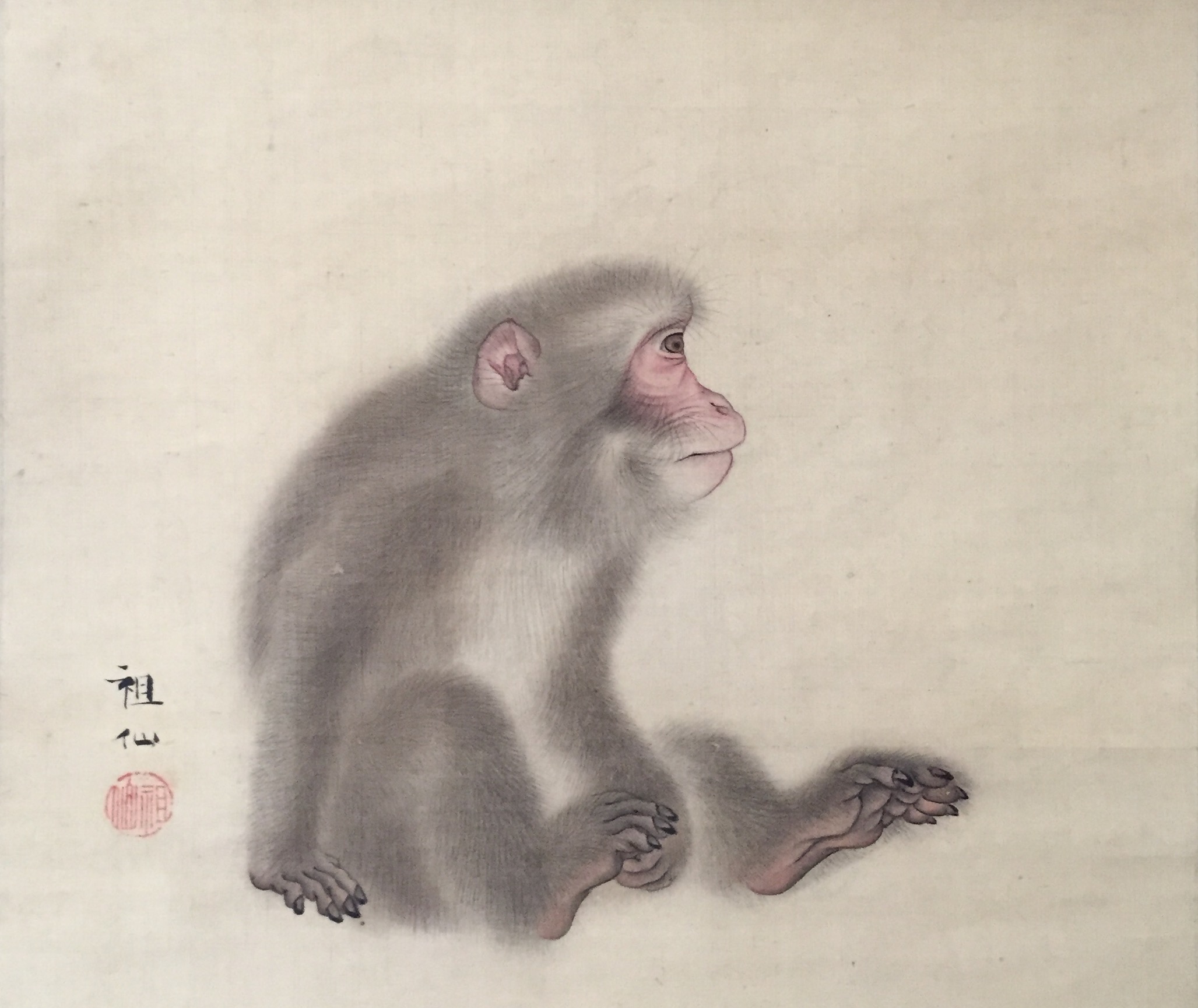 Mori Sosen (1747-1821). Seated Monkey. Hanging scroll painting. Ink and colour on silk. Signed: Sosen. Sealed: Sosen. 28.8 x 33.3 cm.
Mori Sosen (1747-1821). Seated Monkey. Hanging scroll painting. Ink and colour on silk. Signed: Sosen. Sealed: Sosen. 28.8 x 33.3 cm. -
 Iron tsuba of oval form with design of stylized paulownia (nage-giri) in openwork (sukashi). Leaf veins carved in kebori technique. Rounded rim. Copper sekigane. Unsigned. Attributed to Kanshirō, third generation Nishigaki (1680-1761). Edo period: Early 18th century (Kyoho / Genbun era). Size: Height: 77.8 mm. Width: 71.9 mm. Rim thickness: 5.9 mm. Center thickness: 5.0 mm. Provenance: Sasano Masayuki Collection, № 264: "Nishigaki. Third generation Kanshiro (died in in the eleventh year of Hohreki, 1761 at the age of eighty-two). This oblong shape appears a little amateurish at first, however, it was done intentionally to add flavor to to the design. The neat composition is a feature of the third Kanshiro."
Iron tsuba of oval form with design of stylized paulownia (nage-giri) in openwork (sukashi). Leaf veins carved in kebori technique. Rounded rim. Copper sekigane. Unsigned. Attributed to Kanshirō, third generation Nishigaki (1680-1761). Edo period: Early 18th century (Kyoho / Genbun era). Size: Height: 77.8 mm. Width: 71.9 mm. Rim thickness: 5.9 mm. Center thickness: 5.0 mm. Provenance: Sasano Masayuki Collection, № 264: "Nishigaki. Third generation Kanshiro (died in in the eleventh year of Hohreki, 1761 at the age of eighty-two). This oblong shape appears a little amateurish at first, however, it was done intentionally to add flavor to to the design. The neat composition is a feature of the third Kanshiro." -
 Mokkō form iron tsuba carved in relief and inlaid with soft metals (copper, gold, silver) with the design of a cormorant fisherman on the face and a boat on the reverse. Unsigned. Dimensions: 77 mm x 69 mm x 3.0 mm (at seppa-dai) Edo period: 18th or 19th century. "Since Nara period, Japanese fishermen in small boats have used cormorants (u) to catch river fish at night, binding the necks of the birds so that the fish are not swallowed. [...] The bird and the work it performs are symbols of selfless devotion to one's master and keen eyesight." - from Merrily Baird. Symbols of Japan. Thematic motifs in art and design. Rizzoli international publications, Inc., 2001; p. 104. See also in this collection TSU-0212 and TSU-0241.
Mokkō form iron tsuba carved in relief and inlaid with soft metals (copper, gold, silver) with the design of a cormorant fisherman on the face and a boat on the reverse. Unsigned. Dimensions: 77 mm x 69 mm x 3.0 mm (at seppa-dai) Edo period: 18th or 19th century. "Since Nara period, Japanese fishermen in small boats have used cormorants (u) to catch river fish at night, binding the necks of the birds so that the fish are not swallowed. [...] The bird and the work it performs are symbols of selfless devotion to one's master and keen eyesight." - from Merrily Baird. Symbols of Japan. Thematic motifs in art and design. Rizzoli international publications, Inc., 2001; p. 104. See also in this collection TSU-0212 and TSU-0241. -
 Kitagawa Utamaro. Illustration from book Ehon koi no Onamaki, published in 1799. Reference found by Chris Uhlenbeck: he found one of the designs in Hayashi Yoshikazu's 20-volume set Edo makura-e shi shusei: Kitagawa Utamaro. Size: Chuban (25.5 x 18.5 cm), two book pages glued together.
Kitagawa Utamaro. Illustration from book Ehon koi no Onamaki, published in 1799. Reference found by Chris Uhlenbeck: he found one of the designs in Hayashi Yoshikazu's 20-volume set Edo makura-e shi shusei: Kitagawa Utamaro. Size: Chuban (25.5 x 18.5 cm), two book pages glued together. -
 This tsuba is a cut from a typical Bizen Shōami butterfly tsuba (see TSU-0100 in this collection), which normally would have had a circular rim around the butterfly. In this particular example of altered guard we have both eyes of the insect (inlaid in brass or copper) intact. The kebori carving is more pronounced than in TSU-0100 example. Copper sekigane. Unsigned. Attributed to Bizen Shōami school, early Edo period (17th century). Dimensions: 64.7 x 63.7 x 5.2 mm References: see TSU-0100.
This tsuba is a cut from a typical Bizen Shōami butterfly tsuba (see TSU-0100 in this collection), which normally would have had a circular rim around the butterfly. In this particular example of altered guard we have both eyes of the insect (inlaid in brass or copper) intact. The kebori carving is more pronounced than in TSU-0100 example. Copper sekigane. Unsigned. Attributed to Bizen Shōami school, early Edo period (17th century). Dimensions: 64.7 x 63.7 x 5.2 mm References: see TSU-0100. -
 A pair of copper menuki in the form of a shrimp (lobster, crawfish, ebi) with eyes inlaid in shakudō.
A pair of copper menuki in the form of a shrimp (lobster, crawfish, ebi) with eyes inlaid in shakudō.Length: 58.2 mm.
-
 Katsukawa Shunshō ( 勝川 春章; 1726 – 19 January 1793).
Katsukawa Shunshō ( 勝川 春章; 1726 – 19 January 1793).Signed: Shunchô ga (春潮画); Censor's seal: kiwame (改印:極)
Publisher: Iwatoya Kisaburō (Eirindō); c. 1760s – 1832. Marks #173/p.169.
Reference: MFA ACCESSION NUMBER 11.21263. Not in Pins.
Act VII, Gion Ichiriki no ba ("The Ichiriki Teahouse at Gion") This act gives a taste of the bustling atmosphere of the Gion pleasure quarter in Kyoto. Yuranosuke is feigning a life of debauchery at the same teahouse to which Okaru has been indentured. Kudayū, the father of Sadakurō, arrives. He is now working for Moronō and his purpose is to discover whether Yuranosuke still plans revenge or not. He tests Yuranosuke's resolve by offering him food on the anniversary of their lord's death when he should be fasting. Yuranosuke is forced to accept. Yuranosuke's sword – the revered symbol of a samurai – is also found to be covered in rust. It would appear that Yuranosuke has no thoughts of revenge. But still unsure, Kudayū hides under the veranda. Now believing himself alone, Yuranosuke begins to read a secret letter scroll about preparations for the vendetta. On a higher balcony Okaru comes out to cool herself in the evening breeze and, noticing Yuranosuke close by, she also reads the letter reflected in her mirror. As Yuranosuke unrolls the scroll, Kudayū, too, examines the end which trails below the veranda. Suddenly, one of Okaru's hairpins drops to the floor and a shocked Yuranosuke quickly rolls up the scroll. Finding the end of the letter torn off, he realises that yet another person knows his secret and he must silence them both. Feigning merriment, he calls Okaru to come down and offers to buy out her contract. He goes off supposedly to fix the deal. Then Okaru's brother Heiemon enters and, hearing what has just happened, realises that Yuranosuke actually intends to keep her quiet by killing her. He persuades Okaru to let him kill her instead so as to save their honour and she agrees. Overhearing everything, Yuranosuke is now convinced of the pair's loyalty and stops them. He gives Okaru a sword and, guiding her hand, thrusts it through the floorboards to kill Kudayū. The main actor has to convey a wide variety of emotions between a fallen, drunkard rōnin and someone who in reality is quite different since he is only faking his weakness. This is called hara-gei or "belly acting", which means he has to perform from within to change characters. It is technically difficult to perform and takes a long time to learn, but once mastered the audience takes up on the actor's emotion. Emotions are also expressed through the colours of the costumes, a key element in kabuki. Gaudy and strong colours can convey foolish or joyful emotions, whereas severe or muted colours convey seriousness and focus. -
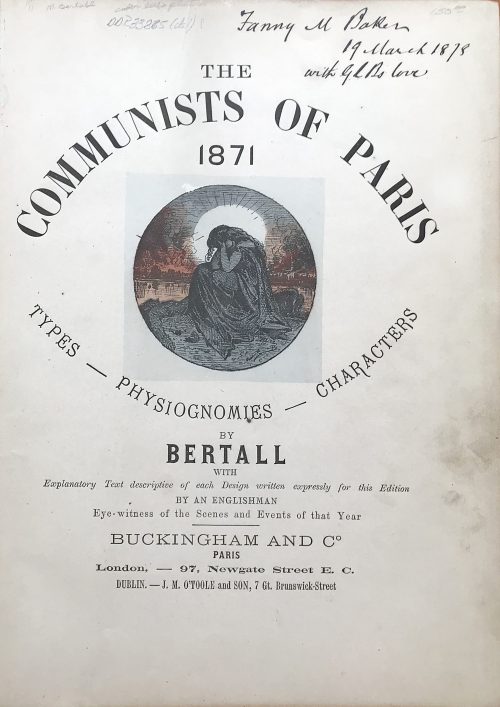 Folio (246 x 321 mm), hardbound in red-brown cloth with gilt lettering and decoration. Content, Introduction by J. E., September, 1873, Artist preface by Bertall, Paris, 1871-1873. Album with 40 hand-colored lithographs by Bertall, numbered 1 through 40, accompanied with extensive descriptions. Ex Libris: Baker. Carpe Diem. Markings: Janny M. Baker with J.L.B. Love, 19 March, 1878 in black ink.
Folio (246 x 321 mm), hardbound in red-brown cloth with gilt lettering and decoration. Content, Introduction by J. E., September, 1873, Artist preface by Bertall, Paris, 1871-1873. Album with 40 hand-colored lithographs by Bertall, numbered 1 through 40, accompanied with extensive descriptions. Ex Libris: Baker. Carpe Diem. Markings: Janny M. Baker with J.L.B. Love, 19 March, 1878 in black ink. -

Yamagane (bronze) tsuba (kagamishi, or mirror-maker) with the design of tomoe (comma) and suhama in openwork. Surface treated with hammer marks and chiselled with the design of maple leaves and encircled two bars (maru-ni-futatsu-biki, Ashikaga clan family crest, or mon) on both sides. Raised rim or rim cover (fukurin). Custom kiri-wood box.
Size: 87.4 x 86.2 x 2.9 (center), 4.9 (rim) mm; weight: 120 g. -
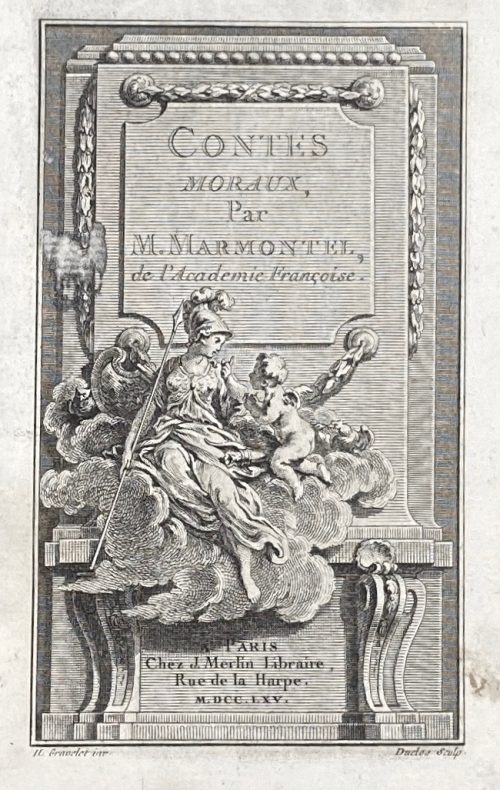 Engraved title-page: Contes | Moraux | Par | M. Marmontel, | de l'Academie Françoise. | A Paris | Chez J. Merlin Libraire, | Rue de la Harpe, | M DCC LXV ||Description: 3 volumes, 8vo, 20.4 x 13 cm, first issue, bound in the contemporary speckled calf, all edges gilt, spines gilt with double red/brown lettering labels (vol 1. labels missing); raised bands, gilt in compartments, double gilt-ruled borders; marbled endpapers. With the contemporary signature in each volume of Caroline Marlborough of Blenheim Palace, and bookplates of Lord F. A. Spencer. This is certainly Lady Caroline Russell, wife of George Spencer, Fourth Duke of Marlborough; she was daughter to the Duke of Bedford and was married in 1762. She died at Blenheim in 1811. The later bookplate in each volume pasted to the front pastedown of her son Francis Almeric Spencer (British, 1779-1845). Pagination: Vol. I: [two blank leaves] [half-title, verso blank] [recto blank, frontispiece on verso: portrait of Marmontel by St. Aubin after Cochin] [engraved t.p. by Duclos after Gravelot, verso blank], [i] ii-xvi, [table des contes with 5-line Errata (autograph Lordine Marlborough), verso blank], [1] 2–345 [346-50 blanks]; 9 plates after Gravelot by: Baquoy, de Longueil (2), Legrand, Leveau (2), Rousseau, Voyez, and unsigned (1). Vol. 2: [two blank leaves] [half-title, verso blank] [engraved t.p. by Duclos after Gravelot, verso blank] [table des contes with 10-line Errata (autograph Lordine Marlborough), verso blank], [1] 2–376 [377-50 blanks]; 9 plates after Gravelot by: de Longueil (5), Leveau (2), Pasquier and Rousseau. Vol. 3: [two blank leaves] [half-title, verso blank] [engraved t.p. by Duclos after Gravelot, verso blank] [table des contes with 9-line Errata, verso blank] [two leaves: approbation and Privilege du Roi] [1] 2–312 [313-16 blanks]; 5 plates after Gravelot by: de Longueil (2), Le Mire (2), and Pasquier. Catalogue raisonné: Cohen-De Ricci 686-7; Gordon N. Ray. The Art of the French Illustrated Book 1700 to 1914. — NY, London: The Pierpont Morgan Library; Cornell University Press, 1982, Vol. 1. pp. 44-5. [In their copy vol. 2 and 3 in a different order]; MFA ACCESSION NUMBER 37.1488a-c Illustrated by: Hubert François Gravelot (French, 1699–1773) Engraved by: Jean Charles Baquoy (French, 1721–1777) Engraved by: Antoine Jean Duclos (French, 1742–1795) Engraved by: Louis Legrand (French, 1723–1807) Engraved by: Noël Le Mire (French, 1724–1801) Engraved by: Jean Jacques André Le Veau (French, 1729–1785) Engraved by: Joseph de Longueil (French, 1730–1792) Engraved by: Jean Jacques Pasquier (French, died in 1785) Engraved by: Jean François Rousseau (French, born in 1740) Engraved by: Nicolas Joseph Voyez l'ainé (French, 1742–1806) Portrait(s) designed by: Charles-Nicolas Cochin le fils (French, 1715–1790) Engraved by: Augustin de Saint-Aubin (French, 1736–1807) Author: Jean-François Marmontel (French, 1723–1799) Publisher: Joseph Merlin (French, 1718–1783) Printer: Pierre-Alexandre Le Prieur (French, born in 1722)
Engraved title-page: Contes | Moraux | Par | M. Marmontel, | de l'Academie Françoise. | A Paris | Chez J. Merlin Libraire, | Rue de la Harpe, | M DCC LXV ||Description: 3 volumes, 8vo, 20.4 x 13 cm, first issue, bound in the contemporary speckled calf, all edges gilt, spines gilt with double red/brown lettering labels (vol 1. labels missing); raised bands, gilt in compartments, double gilt-ruled borders; marbled endpapers. With the contemporary signature in each volume of Caroline Marlborough of Blenheim Palace, and bookplates of Lord F. A. Spencer. This is certainly Lady Caroline Russell, wife of George Spencer, Fourth Duke of Marlborough; she was daughter to the Duke of Bedford and was married in 1762. She died at Blenheim in 1811. The later bookplate in each volume pasted to the front pastedown of her son Francis Almeric Spencer (British, 1779-1845). Pagination: Vol. I: [two blank leaves] [half-title, verso blank] [recto blank, frontispiece on verso: portrait of Marmontel by St. Aubin after Cochin] [engraved t.p. by Duclos after Gravelot, verso blank], [i] ii-xvi, [table des contes with 5-line Errata (autograph Lordine Marlborough), verso blank], [1] 2–345 [346-50 blanks]; 9 plates after Gravelot by: Baquoy, de Longueil (2), Legrand, Leveau (2), Rousseau, Voyez, and unsigned (1). Vol. 2: [two blank leaves] [half-title, verso blank] [engraved t.p. by Duclos after Gravelot, verso blank] [table des contes with 10-line Errata (autograph Lordine Marlborough), verso blank], [1] 2–376 [377-50 blanks]; 9 plates after Gravelot by: de Longueil (5), Leveau (2), Pasquier and Rousseau. Vol. 3: [two blank leaves] [half-title, verso blank] [engraved t.p. by Duclos after Gravelot, verso blank] [table des contes with 9-line Errata, verso blank] [two leaves: approbation and Privilege du Roi] [1] 2–312 [313-16 blanks]; 5 plates after Gravelot by: de Longueil (2), Le Mire (2), and Pasquier. Catalogue raisonné: Cohen-De Ricci 686-7; Gordon N. Ray. The Art of the French Illustrated Book 1700 to 1914. — NY, London: The Pierpont Morgan Library; Cornell University Press, 1982, Vol. 1. pp. 44-5. [In their copy vol. 2 and 3 in a different order]; MFA ACCESSION NUMBER 37.1488a-c Illustrated by: Hubert François Gravelot (French, 1699–1773) Engraved by: Jean Charles Baquoy (French, 1721–1777) Engraved by: Antoine Jean Duclos (French, 1742–1795) Engraved by: Louis Legrand (French, 1723–1807) Engraved by: Noël Le Mire (French, 1724–1801) Engraved by: Jean Jacques André Le Veau (French, 1729–1785) Engraved by: Joseph de Longueil (French, 1730–1792) Engraved by: Jean Jacques Pasquier (French, died in 1785) Engraved by: Jean François Rousseau (French, born in 1740) Engraved by: Nicolas Joseph Voyez l'ainé (French, 1742–1806) Portrait(s) designed by: Charles-Nicolas Cochin le fils (French, 1715–1790) Engraved by: Augustin de Saint-Aubin (French, 1736–1807) Author: Jean-François Marmontel (French, 1723–1799) Publisher: Joseph Merlin (French, 1718–1783) Printer: Pierre-Alexandre Le Prieur (French, born in 1722) -
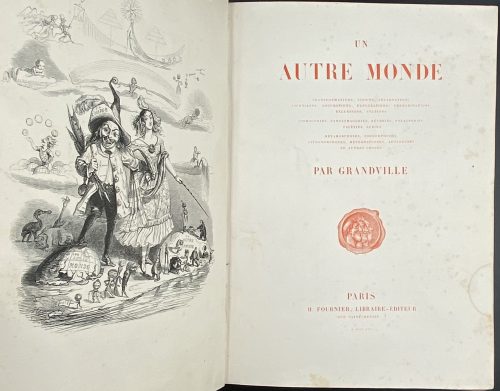 Description: One volume, collated 4t0, 27.3 x 20 cm, bound in contemporary quarter black chagrin, gilt ornaments and lettering to spine (reliure à l'époque romantique), marbled end-papers; printed on wove paper (vélin fort). Title-page (red): UN | AUTRE MONDE | TRANSFORMATIONS, VISIONS, INCARNATIONS | ASCENSIONS, LOCOMOTIONS, EXPLORATIONS, PÉRÉGRINATIONS | EXCURSIONS, STATIONS || COSMOGONIES, FANTASMAGORIES, RÈVERIES, FOLATRERIES | FACÉCIES, LUBIES || MÉTAMORPHOSES, ZOOMORPHOSES | LITHOMORPHOSES, MÉTEMPSYCHOSES, APOTHÉOSES | ET AUTRES CHOSES | PAR GRANDVILLE | [device] | PARIS | H. FOURNIER, LIBRAIRE-ÉDITEUR | RUE SAINT-BENOIT, 7 | M DCCC XLIV Pagination: ff, [2] half-title in red / imprim., [2] blank / frontis. in black, [2] title page in red / blank, [1] 2-295, [1] explication and erratum, bf, illustrations. Collation: 4to, (1)-(37)4 with frontispiece, 133 woodcut vignettes, 15 full-page black woodcuts, and 36 hand-coloured plates. Catalogue raisonné: Carteret (p. 285) describes the book as 'in-8', but the collation is actually in quarto (in-4, or 4to) with series signed in Arabic numerals. Ray (French): p. 275-7. The publication is anonymous, however, Grandville reveals the author's name (that's Taxile Delord) on the vignette on p. 292 at the bottom of the plate (under ICI).
Description: One volume, collated 4t0, 27.3 x 20 cm, bound in contemporary quarter black chagrin, gilt ornaments and lettering to spine (reliure à l'époque romantique), marbled end-papers; printed on wove paper (vélin fort). Title-page (red): UN | AUTRE MONDE | TRANSFORMATIONS, VISIONS, INCARNATIONS | ASCENSIONS, LOCOMOTIONS, EXPLORATIONS, PÉRÉGRINATIONS | EXCURSIONS, STATIONS || COSMOGONIES, FANTASMAGORIES, RÈVERIES, FOLATRERIES | FACÉCIES, LUBIES || MÉTAMORPHOSES, ZOOMORPHOSES | LITHOMORPHOSES, MÉTEMPSYCHOSES, APOTHÉOSES | ET AUTRES CHOSES | PAR GRANDVILLE | [device] | PARIS | H. FOURNIER, LIBRAIRE-ÉDITEUR | RUE SAINT-BENOIT, 7 | M DCCC XLIV Pagination: ff, [2] half-title in red / imprim., [2] blank / frontis. in black, [2] title page in red / blank, [1] 2-295, [1] explication and erratum, bf, illustrations. Collation: 4to, (1)-(37)4 with frontispiece, 133 woodcut vignettes, 15 full-page black woodcuts, and 36 hand-coloured plates. Catalogue raisonné: Carteret (p. 285) describes the book as 'in-8', but the collation is actually in quarto (in-4, or 4to) with series signed in Arabic numerals. Ray (French): p. 275-7. The publication is anonymous, however, Grandville reveals the author's name (that's Taxile Delord) on the vignette on p. 292 at the bottom of the plate (under ICI).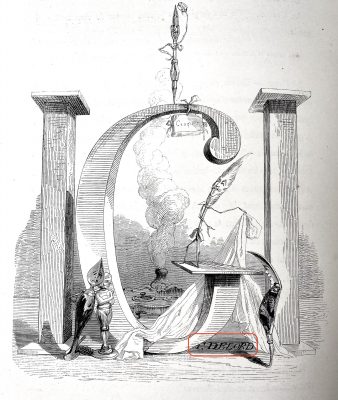
-
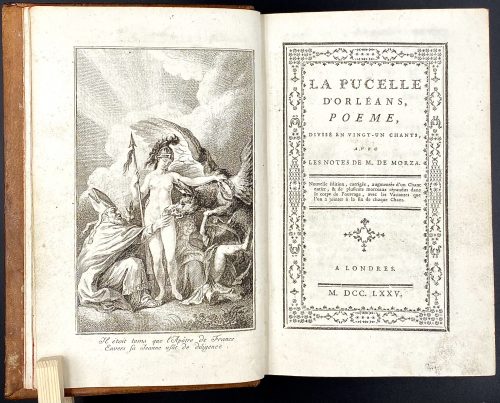 Half title: LA PUCELLE | D’ORLEANS.|| Title: LA PUCELLE | D’ORLEANS , | POEME , | DIVISÉ EN VINGT-UN CHANTS , AVEC | LES NOTES DE M. DE MORZA. | Nouvelle édition, corrigée, augmentée d'un Chant | entier, & de plusieurs morceaux répandus dans | le corps de l'ouvrage, avec les Variantes que | l'on a jointes à la fin de chaque Chant. | [ornament] | A LONDRES. |—| M. DCC. LXXV. || Pagination : [4] – two blank unnumbered fly leaves, [i,ii] – h.t. / double-ruled blank leaf, [2] – blank / frontispiece on verso, [iii, iv] – t.p. ruled and bordered / double-ruled blank leaf, [v]vi-viii – table, ix-xv – preface, [xvi] – double-ruled blank leaf, [1]2-447 [448] – double-ruled blank leaf, [2] – two blank unnumbered fly leaves; page 14 misnumbered 18; title within ornamental border; text within double-ruled borders; head- and tail-pieces; 22 leaves of plates (frontis. + one before each chant.) Collation: 8vo; a8 A-Z8 Aa-Ee8 Binding: 19.9 x 13.2 cm; full contemporary brown calf, blind ruled plates, spine with raised bands, gilt-ruled and tooled in compartments, red label with gilt lettering, all edges red; plate for chant 6, H4, H5 - separated from the block. De Morza is Voltaire (Cf. Quérard, v. 10, p. 306). Engravings unsigned; attributed to Desrais, Claude-Louis (French, 1746 – 1816). False imprint; possibly printed in Paris.
Half title: LA PUCELLE | D’ORLEANS.|| Title: LA PUCELLE | D’ORLEANS , | POEME , | DIVISÉ EN VINGT-UN CHANTS , AVEC | LES NOTES DE M. DE MORZA. | Nouvelle édition, corrigée, augmentée d'un Chant | entier, & de plusieurs morceaux répandus dans | le corps de l'ouvrage, avec les Variantes que | l'on a jointes à la fin de chaque Chant. | [ornament] | A LONDRES. |—| M. DCC. LXXV. || Pagination : [4] – two blank unnumbered fly leaves, [i,ii] – h.t. / double-ruled blank leaf, [2] – blank / frontispiece on verso, [iii, iv] – t.p. ruled and bordered / double-ruled blank leaf, [v]vi-viii – table, ix-xv – preface, [xvi] – double-ruled blank leaf, [1]2-447 [448] – double-ruled blank leaf, [2] – two blank unnumbered fly leaves; page 14 misnumbered 18; title within ornamental border; text within double-ruled borders; head- and tail-pieces; 22 leaves of plates (frontis. + one before each chant.) Collation: 8vo; a8 A-Z8 Aa-Ee8 Binding: 19.9 x 13.2 cm; full contemporary brown calf, blind ruled plates, spine with raised bands, gilt-ruled and tooled in compartments, red label with gilt lettering, all edges red; plate for chant 6, H4, H5 - separated from the block. De Morza is Voltaire (Cf. Quérard, v. 10, p. 306). Engravings unsigned; attributed to Desrais, Claude-Louis (French, 1746 – 1816). False imprint; possibly printed in Paris. -
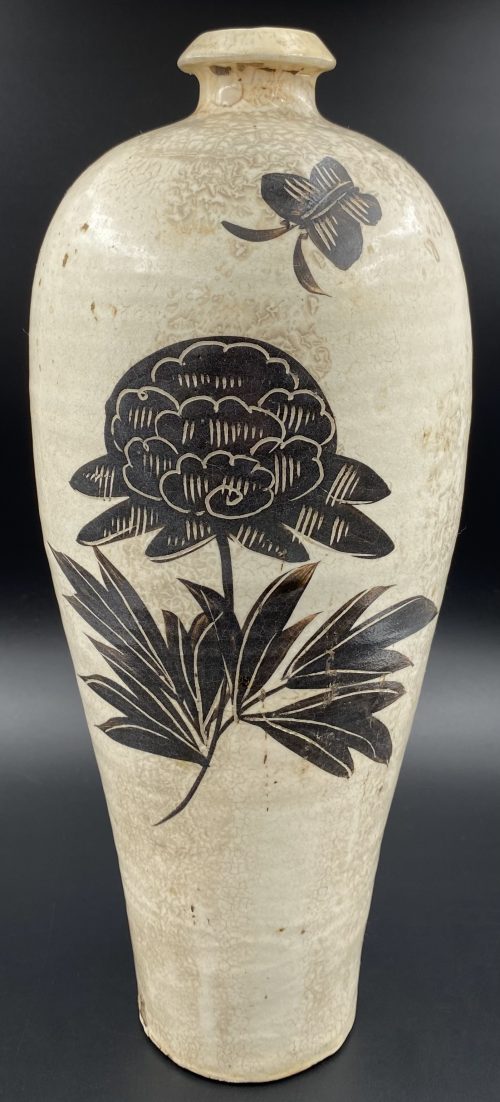 Typical meiping body, short neck, lipped rim; painted in the blackish-brown slip with two blossoms and butterflies under a clear glaze. The foot ring is unglazed exposing the brown body. China, the Yuan Dynasty [大元] (1279 – 1368). Diameter: 14 cm; Height: 30.5 cm.
Typical meiping body, short neck, lipped rim; painted in the blackish-brown slip with two blossoms and butterflies under a clear glaze. The foot ring is unglazed exposing the brown body. China, the Yuan Dynasty [大元] (1279 – 1368). Diameter: 14 cm; Height: 30.5 cm. -
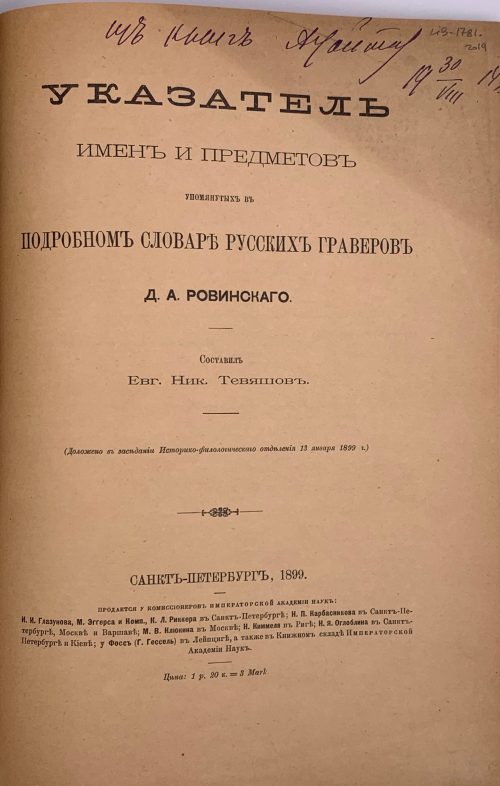 УКАЗАТЕЛЬ | ИМЕНЪ И ПРЕДМЕТОВЪ | УПОМЯНУТЫХЪ ВЪ | ПОДРОБНОМЪ СЛОВАРЕѢ РУССКИХЪ ГРАВЕРОВЪ Д. А. РОВИНСКАГО. | СОСТАВИЛЪ | ЕВГ. НИК. ТЕВЯШОВЪ. | (Доложено въ заседанiи Историко-филологическаго отделенiя 13 января 1899 г.) | САНКТЪ-ПЕТЕРБУРГЪ, 1899. | ПРОДАЕТСЯ У КОМИССIОНЕРОВЪ ИМПЕРАТОРСКОЙ АКАДЕМИИ НАУКЪ: | И. И. Глазунова, М. Эггерса и Комп., К. Л. Риккера въ Санктъ-Петербургѣ; Н. П. Карбасникова въ Санктъ-Пе- | тербургѣ, Москвѣ и Варшавѣ; | М. В. Клюкина въ Москве; Н. Киммеля въ Ригѣ; Н. Я. Оглоблина въ Санктъ- | Петербургѣ и Кiевѣ; у Фоссъ (Г. Гэссель) въ Лейпцигѣ, а также въ Книжномъ складѣ Императорской | академiи наукъ. | Цена: 1 р. 20 к. = 3 Mark. Pagination: original wrapper bound in, [2] t.p. / colophon, [1, 2] 3-208 (numbered half-pages, 52 leaves). Collation: 4to; 1-134. Binding: Owner's later 3/4 grey cloth over buckram boards. original front wrapper preserved, upper-right corner cut out.
УКАЗАТЕЛЬ | ИМЕНЪ И ПРЕДМЕТОВЪ | УПОМЯНУТЫХЪ ВЪ | ПОДРОБНОМЪ СЛОВАРЕѢ РУССКИХЪ ГРАВЕРОВЪ Д. А. РОВИНСКАГО. | СОСТАВИЛЪ | ЕВГ. НИК. ТЕВЯШОВЪ. | (Доложено въ заседанiи Историко-филологическаго отделенiя 13 января 1899 г.) | САНКТЪ-ПЕТЕРБУРГЪ, 1899. | ПРОДАЕТСЯ У КОМИССIОНЕРОВЪ ИМПЕРАТОРСКОЙ АКАДЕМИИ НАУКЪ: | И. И. Глазунова, М. Эггерса и Комп., К. Л. Риккера въ Санктъ-Петербургѣ; Н. П. Карбасникова въ Санктъ-Пе- | тербургѣ, Москвѣ и Варшавѣ; | М. В. Клюкина въ Москве; Н. Киммеля въ Ригѣ; Н. Я. Оглоблина въ Санктъ- | Петербургѣ и Кiевѣ; у Фоссъ (Г. Гэссель) въ Лейпцигѣ, а также въ Книжномъ складѣ Императорской | академiи наукъ. | Цена: 1 р. 20 к. = 3 Mark. Pagination: original wrapper bound in, [2] t.p. / colophon, [1, 2] 3-208 (numbered half-pages, 52 leaves). Collation: 4to; 1-134. Binding: Owner's later 3/4 grey cloth over buckram boards. original front wrapper preserved, upper-right corner cut out. -
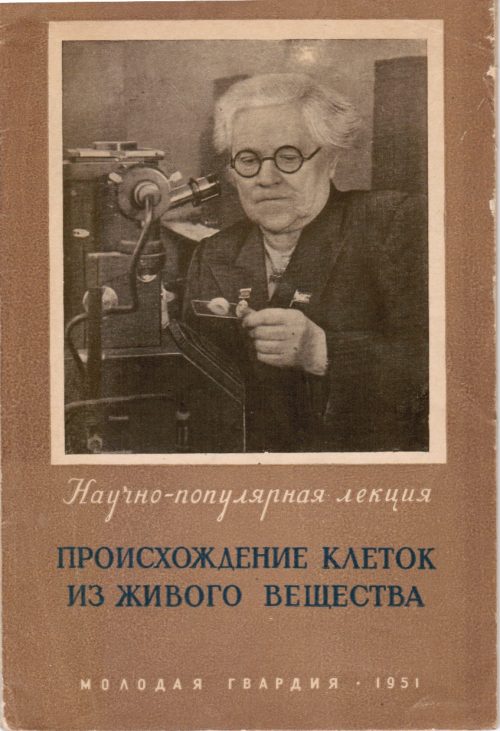 Title: О. Б. ЛЕПЕШИНСКАЯ, | действительный член Академии медицинских наук, | лауреат Сталинской премии. | Происхождение клеток | из живого вещества | [blank] | ИЗДАТЕЛЬСТВО ЦК ВЛКСМ | "МОЛОДАЯ ГВАРДИЯ" | 1951 || Pagination: original pictorial wrappers with portrait in frame, [1-2] – t.p. / imprint., 3-37 [38] [2] – blank / colophon.
Title: О. Б. ЛЕПЕШИНСКАЯ, | действительный член Академии медицинских наук, | лауреат Сталинской премии. | Происхождение клеток | из живого вещества | [blank] | ИЗДАТЕЛЬСТВО ЦК ВЛКСМ | "МОЛОДАЯ ГВАРДИЯ" | 1951 || Pagination: original pictorial wrappers with portrait in frame, [1-2] – t.p. / imprint., 3-37 [38] [2] – blank / colophon. -
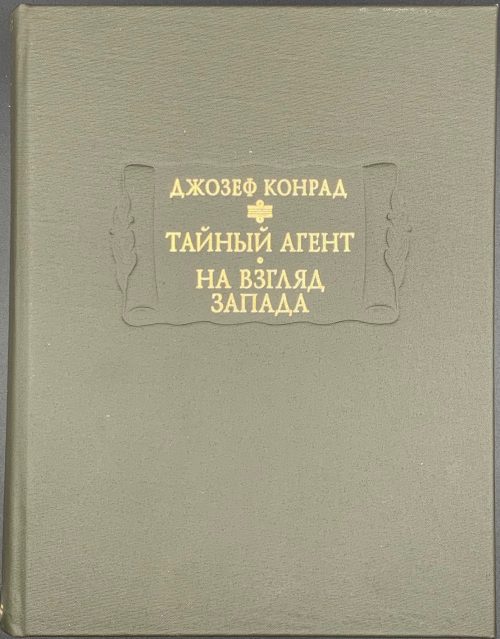 Title: ДЖОЗЕФ КОНРАД |{device} | ТАЙНЫЙ АГЕНТ | • | НА ВЗГЛЯД ЗАПАДА | • | Издание подготовил | В.М. ТОЛМАЧЕВ | Научно-издательский центр | «Ладомир» | «Наука» | Москва || Frontispiece: JOSEPH CONRAD |{device} | THE SECRET AGENT | • | UNDER WESTERN EYES || Pagination: [1-9] 10-595 [3] [2 advert.]. Binding: serial green cloth blind-stamped with a scroll adorned with gold lettering to board and spine, 22.5 x 17 cm. Original titles: [LIB-2762.2021] Joseph Conrad. The secret agent: a simple tale. — London: Methuen & Co., [1907]; [LIB-3213.2023] Joseph Conrad. The secret agent: A drama in three acts. — London, T. Werner Laurie, 1923.
Title: ДЖОЗЕФ КОНРАД |{device} | ТАЙНЫЙ АГЕНТ | • | НА ВЗГЛЯД ЗАПАДА | • | Издание подготовил | В.М. ТОЛМАЧЕВ | Научно-издательский центр | «Ладомир» | «Наука» | Москва || Frontispiece: JOSEPH CONRAD |{device} | THE SECRET AGENT | • | UNDER WESTERN EYES || Pagination: [1-9] 10-595 [3] [2 advert.]. Binding: serial green cloth blind-stamped with a scroll adorned with gold lettering to board and spine, 22.5 x 17 cm. Original titles: [LIB-2762.2021] Joseph Conrad. The secret agent: a simple tale. — London: Methuen & Co., [1907]; [LIB-3213.2023] Joseph Conrad. The secret agent: A drama in three acts. — London, T. Werner Laurie, 1923. -
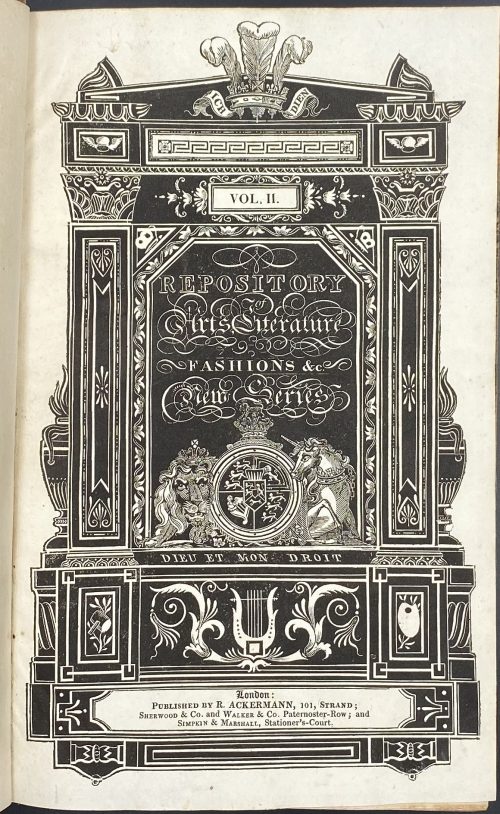 Pagination: [2] – letterpress title / blank, [2] – t.p. contents / to readers, [1] 2-368 [4 index], + 9 b/w and 27 coloured plates. Collation: 4to; letterpress title, [A]1 B-Z4 Aa-Zz4 3A-3B4 3C3. Binding: 25 x 16 cm; gilt-ruled half-calf over marbled boards, flat spine, gilt-ruled compartments, gilt lettering; front board almost detached. References: Martin Hardie (1906), p.310 [LIB-2623.2021]; R. V. Tooley (1935), p. 26 [LIB-2641.2021]; J. R. Abbey (1953), Cat. № 212, p. 166 [LIB-2622.2021].
Pagination: [2] – letterpress title / blank, [2] – t.p. contents / to readers, [1] 2-368 [4 index], + 9 b/w and 27 coloured plates. Collation: 4to; letterpress title, [A]1 B-Z4 Aa-Zz4 3A-3B4 3C3. Binding: 25 x 16 cm; gilt-ruled half-calf over marbled boards, flat spine, gilt-ruled compartments, gilt lettering; front board almost detached. References: Martin Hardie (1906), p.310 [LIB-2623.2021]; R. V. Tooley (1935), p. 26 [LIB-2641.2021]; J. R. Abbey (1953), Cat. № 212, p. 166 [LIB-2622.2021]. -
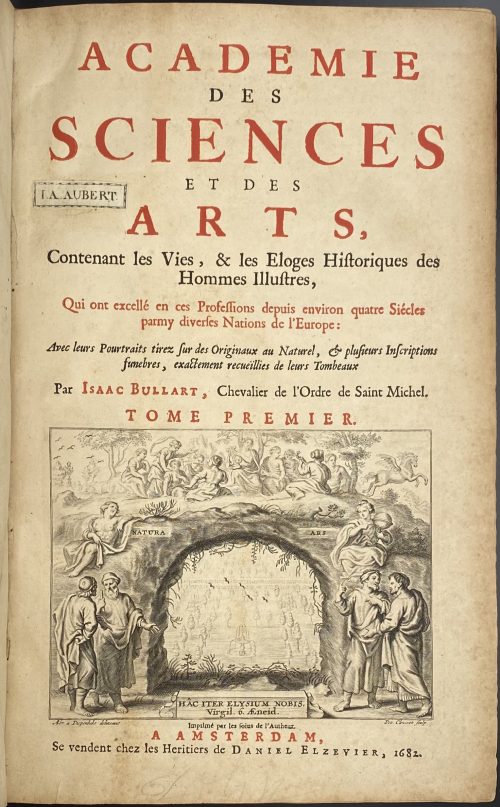 Title: ACADEMIE | DES | SCIENCES | ET DES | ARTS, | Contenant les Vies & les Eloges Historiques des | Hommes Illustres, | Qui ont excellé en ces Professions depuis environ quatre Siécles | parmy diverses Nations de l’Europe : |Avec leurs Pourtraits tirez sur des Originaux au Naturel, & plusieurs Inscriptions | funebres, exactement recueïlies de leurs Tombeaux | Par Isaac Bullart , Chevalier de l’Ordre de Saint Michel. | TOME PREMIER | {allegorical vignette, signed Abr. A Diepenbeke delineavit – Pet. Clouwet sculp.} | Imprimé par les soins de l’Autheur. | A AMSTERDAM, | Se vendent chez les Heritiers de Daniel Elzevier, 1682. || Vol. 1: Pagination: 2 blank end-leaves, [2] – Two-volumes h.t. / blank ; [2] – 1st vol. t.p. in black and red with vignette engraved by Pieter Clouwet (Flemish, 1629–1670) after Abraham van Diepenbeeck (Dutch, 1596 - 1675), book-label 'I. A. Aubert' pasted / blank; [7] – dedication to Jacques Theodore de Brias {Jacques-Théodore de Bryas (Dutch, 1630 – 1694)}, [9] – preface, [2] – table demonstrative / stanza by Guilielmus Riverius, [2] – vignette “Tardius sed grandius” with an elephant in ornamental frame / text; [2] – Advis au lecteur; [1, 2] – noms politiques / blank (A1), 3(A2)-416, 2 blank end-leaves; laking 8 last pages 417-424 if compared to Paris 2 in 1 vol. edition LIB-2676.2021, and lacking 4 last pages if compared with another Amsterdam edition LIB-2239.2019. These last 4 pages contain portraits and eulogies of François Primatici and Jacques Barozzi de Vignole. Collation: 4to; [*]6, **8, A6 B-Fff4, lacking Ggg4, 118 plates (instead of 120) within a collation. Vol. 2: Pagination: 2 blank end-leaves, [2] – tome second h.t. / blank ; [2] – 2nd vol. t.p. in black and red with vignette similar to vol. 1, with book-label 'I. A. Aubert' / blank; [4] – advertissement; [2] – f.t. Theologiens / blank; [2] – noms theologiens / blank 1-501 [3] – table eloges, 1 blank end-leaf. Collation: 4to; [*]4, **2, A-Sss4, 159 plates within a collation. Binding: both volumes uniformly bound in full contemporary cream vellum with blind double fillet over boards, raised bands, compartments tooled in black, brown calf labels with gilt lettering to spine. Printed on laid paper, with tall "s", all margins sprinkled red; the size of each vol.: 32.2 x 20.5 x 4.7 cm. A full description of plates, as well as their images, presented in LIB-2676.2021.
Title: ACADEMIE | DES | SCIENCES | ET DES | ARTS, | Contenant les Vies & les Eloges Historiques des | Hommes Illustres, | Qui ont excellé en ces Professions depuis environ quatre Siécles | parmy diverses Nations de l’Europe : |Avec leurs Pourtraits tirez sur des Originaux au Naturel, & plusieurs Inscriptions | funebres, exactement recueïlies de leurs Tombeaux | Par Isaac Bullart , Chevalier de l’Ordre de Saint Michel. | TOME PREMIER | {allegorical vignette, signed Abr. A Diepenbeke delineavit – Pet. Clouwet sculp.} | Imprimé par les soins de l’Autheur. | A AMSTERDAM, | Se vendent chez les Heritiers de Daniel Elzevier, 1682. || Vol. 1: Pagination: 2 blank end-leaves, [2] – Two-volumes h.t. / blank ; [2] – 1st vol. t.p. in black and red with vignette engraved by Pieter Clouwet (Flemish, 1629–1670) after Abraham van Diepenbeeck (Dutch, 1596 - 1675), book-label 'I. A. Aubert' pasted / blank; [7] – dedication to Jacques Theodore de Brias {Jacques-Théodore de Bryas (Dutch, 1630 – 1694)}, [9] – preface, [2] – table demonstrative / stanza by Guilielmus Riverius, [2] – vignette “Tardius sed grandius” with an elephant in ornamental frame / text; [2] – Advis au lecteur; [1, 2] – noms politiques / blank (A1), 3(A2)-416, 2 blank end-leaves; laking 8 last pages 417-424 if compared to Paris 2 in 1 vol. edition LIB-2676.2021, and lacking 4 last pages if compared with another Amsterdam edition LIB-2239.2019. These last 4 pages contain portraits and eulogies of François Primatici and Jacques Barozzi de Vignole. Collation: 4to; [*]6, **8, A6 B-Fff4, lacking Ggg4, 118 plates (instead of 120) within a collation. Vol. 2: Pagination: 2 blank end-leaves, [2] – tome second h.t. / blank ; [2] – 2nd vol. t.p. in black and red with vignette similar to vol. 1, with book-label 'I. A. Aubert' / blank; [4] – advertissement; [2] – f.t. Theologiens / blank; [2] – noms theologiens / blank 1-501 [3] – table eloges, 1 blank end-leaf. Collation: 4to; [*]4, **2, A-Sss4, 159 plates within a collation. Binding: both volumes uniformly bound in full contemporary cream vellum with blind double fillet over boards, raised bands, compartments tooled in black, brown calf labels with gilt lettering to spine. Printed on laid paper, with tall "s", all margins sprinkled red; the size of each vol.: 32.2 x 20.5 x 4.7 cm. A full description of plates, as well as their images, presented in LIB-2676.2021. -
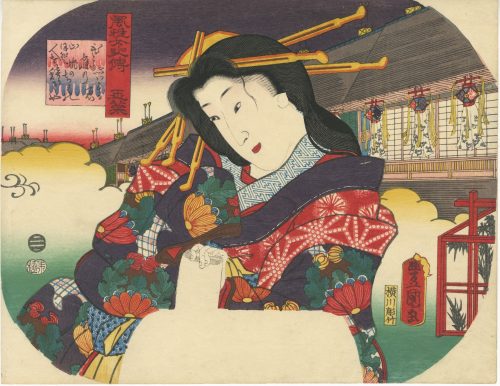 Artist: Utagawa Kunisada [歌川 国貞], a.k.a. Utagawa Toyokuni III [三代 歌川 豊国] (Japanese, 1786 – 1865). Signed: Toyokuni ga [豊国 画] in a red toshidama cartouche Block carver: Yokokawa Takejirō [横川竹二郎] (Japanese, fl. 1845 – 1863), seal: 彫竹 – hori Take. Publisher: Ibaya Senzaburō [伊場屋仙三郎] (Japanese, fl. c. 1845 – 1847). Media: Untrimmed fan print (uchiwa-e), 232 x 300 mm. Title: Tamagiku [玉菜]. Series: Chronicles of Elegant Women [風雅女史傳] (Fūga joshiden). Combined date seal and kiwame censor seal: Ansei 6 (1859). Other prints from the same series in this collection [SVJP-0216.2016] — Princess Sotoori:
Artist: Utagawa Kunisada [歌川 国貞], a.k.a. Utagawa Toyokuni III [三代 歌川 豊国] (Japanese, 1786 – 1865). Signed: Toyokuni ga [豊国 画] in a red toshidama cartouche Block carver: Yokokawa Takejirō [横川竹二郎] (Japanese, fl. 1845 – 1863), seal: 彫竹 – hori Take. Publisher: Ibaya Senzaburō [伊場屋仙三郎] (Japanese, fl. c. 1845 – 1847). Media: Untrimmed fan print (uchiwa-e), 232 x 300 mm. Title: Tamagiku [玉菜]. Series: Chronicles of Elegant Women [風雅女史傳] (Fūga joshiden). Combined date seal and kiwame censor seal: Ansei 6 (1859). Other prints from the same series in this collection [SVJP-0216.2016] — Princess Sotoori: SVJP-0400.2023 — Saiko:
SVJP-0400.2023 — Saiko:
 Note by Elena Varshavsky:
Tamagiku [玉菜] (Japanese, 1702 – 1726) – Precious Chrysanthemum (translated also as Jade Chrysanthemum; one can say also Gem Chrysanthemum). She was a courtesan famous for her beauty, kind heart, and countless artistic accomplishments. She died young and was deeply grieved by the establishment of Nakamanji-ya (中万字屋) for which she worked, and beyond. Her memory was celebrated during the Bon festival of the commemoration of the dead, and lanterns were hung at the gallery of that establishment and other neighbouring ones to commemorate her and appease her soul. These lanterns are seen behind her. Kabuki plays were continuously dedicated to her, she figured in Edo period literature and was often portrayed on ukiyo-e prints. In many cases, she was shown with the lanterns associated with her. Those lanterns were called “Tamagiku Lanterns”.
Other depictions of Tamagiku:
Note by Elena Varshavsky:
Tamagiku [玉菜] (Japanese, 1702 – 1726) – Precious Chrysanthemum (translated also as Jade Chrysanthemum; one can say also Gem Chrysanthemum). She was a courtesan famous for her beauty, kind heart, and countless artistic accomplishments. She died young and was deeply grieved by the establishment of Nakamanji-ya (中万字屋) for which she worked, and beyond. Her memory was celebrated during the Bon festival of the commemoration of the dead, and lanterns were hung at the gallery of that establishment and other neighbouring ones to commemorate her and appease her soul. These lanterns are seen behind her. Kabuki plays were continuously dedicated to her, she figured in Edo period literature and was often portrayed on ukiyo-e prints. In many cases, she was shown with the lanterns associated with her. Those lanterns were called “Tamagiku Lanterns”.
Other depictions of Tamagiku:

Tamagiku (Ancient and modern women's biography) by Kunisada, 1859.

Courtesan Tamagiku by Kunichika.

Tamagiku of the Nakamanjiya, Inaki Shinnojō, and Nakamanjiya Yahei (looking through the window) by Kunisada.

Nakamanji-Ya Tamagiku by Kunisada
Sources: darumapedia; kajiipeta; kabuki21; crosseyedgallery.
Nakamanji-Ya Tamagiku by Kunisada, 1857
-
 Iron tsuba of round form, on both sides decorated in low relief (kebori) with a dragon, eyes inlaid in brass. NBTHK: Hozon, № 4011013. Kamakura-bori type of tsuba. Med-Muromachi period, c. 1450. Diameter: 90 mm; Thickness (centre): 3.3 cm, Thickness (rim): 2.4 cm Reference: Japanese Swords and Sword Fittings from the Collection of Dr Walter Ames Compton (Part I). — NY: Christie's, 1992, p. 10, №2. Obviously, Compton's tsuba has an altered nakago-ana and placed on the photo upside down. Compton's tsuba has a raised mimi, while mine does not.
Iron tsuba of round form, on both sides decorated in low relief (kebori) with a dragon, eyes inlaid in brass. NBTHK: Hozon, № 4011013. Kamakura-bori type of tsuba. Med-Muromachi period, c. 1450. Diameter: 90 mm; Thickness (centre): 3.3 cm, Thickness (rim): 2.4 cm Reference: Japanese Swords and Sword Fittings from the Collection of Dr Walter Ames Compton (Part I). — NY: Christie's, 1992, p. 10, №2. Obviously, Compton's tsuba has an altered nakago-ana and placed on the photo upside down. Compton's tsuba has a raised mimi, while mine does not.
 Two other examples of the same design may be found at: (1) Christie, Manson & Woods auction sales “Kotetsu”, 1980, page 12, №10 and (2) Professor A. Z. Freeman and the Phyllis Sharpe Memorial collections №36, pp. 18-19. Both have raised mimi, the latter classified as Katchushi tsuba.
More about Kamakura-bori tsuba here.
Two other examples of the same design may be found at: (1) Christie, Manson & Woods auction sales “Kotetsu”, 1980, page 12, №10 and (2) Professor A. Z. Freeman and the Phyllis Sharpe Memorial collections №36, pp. 18-19. Both have raised mimi, the latter classified as Katchushi tsuba.
More about Kamakura-bori tsuba here.
-
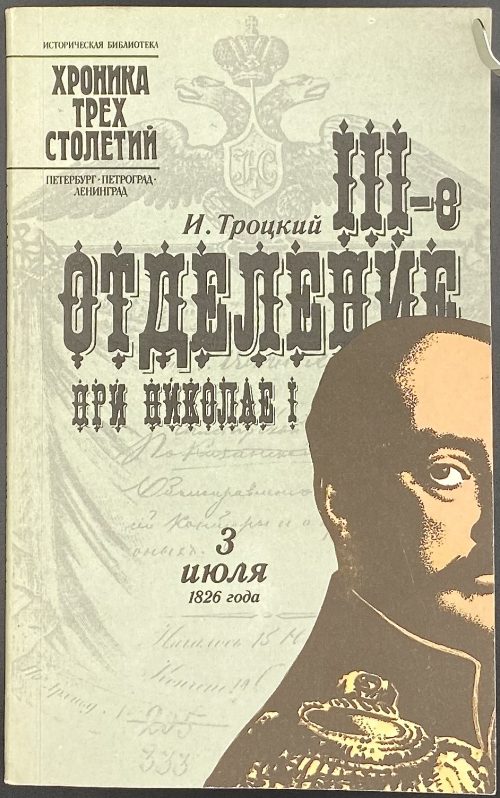 Front wrapper: Историческая библиотека | Хроника трех столетий | Петербург – Петроград – Ленинград | И. Троцкий | III-е Отделение при Николае I | 3 | июля | 1826 года || Title: И. Троцкий | III-е Отделение при Николае I || Faux title (p. 75) : Жизнь | Шервуда-Верного || Pagination: [1-5] 6-317 [3]; 320 pages. Collation: 16mo; [1]16 2-1016; 160 leaves. Binding: Softcover, original pictorial wrappers. Print run: 150,000 copies. Contributors: Исаак Моисеевич Троцкий (Russian-Jewish, 1903 – 1937) – author of the text. Яков Аркадьевич Гордин (Russian-Jewish, b. 1935) – foreword, preparation.
Front wrapper: Историческая библиотека | Хроника трех столетий | Петербург – Петроград – Ленинград | И. Троцкий | III-е Отделение при Николае I | 3 | июля | 1826 года || Title: И. Троцкий | III-е Отделение при Николае I || Faux title (p. 75) : Жизнь | Шервуда-Верного || Pagination: [1-5] 6-317 [3]; 320 pages. Collation: 16mo; [1]16 2-1016; 160 leaves. Binding: Softcover, original pictorial wrappers. Print run: 150,000 copies. Contributors: Исаак Моисеевич Троцкий (Russian-Jewish, 1903 – 1937) – author of the text. Яков Аркадьевич Гордин (Russian-Jewish, b. 1935) – foreword, preparation. -
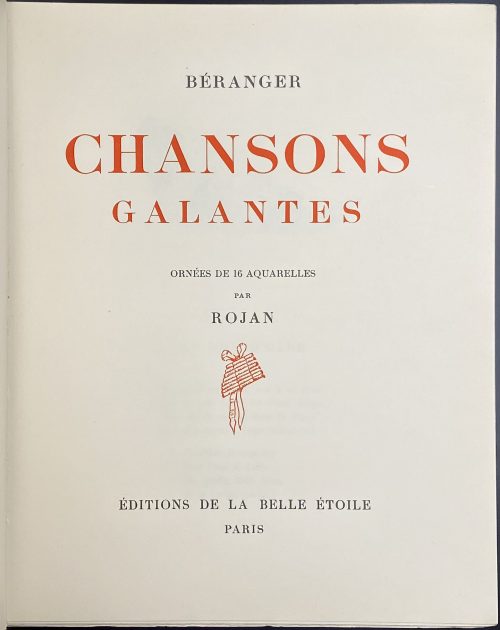 Cover (in red and black): BÉRANGER | CHANSONS | GALANTES | {vignette} || Title page (in red and black): BÉRANGER | CHANSONS | GALANTES | ORNEES DE 16 AQUARELLES | PAR | ROJAN | {vignette} | ÉDITIONS DE LA BELLE ÉTOILE | PARIS || Pagination: [2] – front wrapper, [2] – blank, [1-4] 5-157 [3] [2] blank, [2] – back wrapper; the total number of pages 168 + 16 plates, numerous in-text head- and tailpieces in black. Collation: 4to; [1] 2-214, wrapped leaves included in collation; the total number of leaves 84 + 16 plates. Colour illustrations: 16 full-page colour plates and 4 colour headpieces are produced by the so-called Duval-Beaufumé process (collotype and stencil) of reproductions after Rojan’s watercolours. Tirage: Limited edition of 1500 copies, of which this is № 1434. Binding: Publisher's French flapped cream wrappers with red and black lettering to front wrapper and black lettering to spine, wove paper (vélin Navarre), uncut. Size: 243 x 195 mm. Contributors: Béranger, Pierre-Jean de (French, 1780 – 1857) – author. Rojankovsky, Feodor [Rojan; Рожанковский, Фёдор Степанович] (Russian-American, 1891 – 1970) – artist. NOTE on technique: Micro-photography reveals that this is not a collotype but some sort of photochemical reproduction method, such as a halftone screen. The colour was applied with a stencil, indeed.
Cover (in red and black): BÉRANGER | CHANSONS | GALANTES | {vignette} || Title page (in red and black): BÉRANGER | CHANSONS | GALANTES | ORNEES DE 16 AQUARELLES | PAR | ROJAN | {vignette} | ÉDITIONS DE LA BELLE ÉTOILE | PARIS || Pagination: [2] – front wrapper, [2] – blank, [1-4] 5-157 [3] [2] blank, [2] – back wrapper; the total number of pages 168 + 16 plates, numerous in-text head- and tailpieces in black. Collation: 4to; [1] 2-214, wrapped leaves included in collation; the total number of leaves 84 + 16 plates. Colour illustrations: 16 full-page colour plates and 4 colour headpieces are produced by the so-called Duval-Beaufumé process (collotype and stencil) of reproductions after Rojan’s watercolours. Tirage: Limited edition of 1500 copies, of which this is № 1434. Binding: Publisher's French flapped cream wrappers with red and black lettering to front wrapper and black lettering to spine, wove paper (vélin Navarre), uncut. Size: 243 x 195 mm. Contributors: Béranger, Pierre-Jean de (French, 1780 – 1857) – author. Rojankovsky, Feodor [Rojan; Рожанковский, Фёдор Степанович] (Russian-American, 1891 – 1970) – artist. NOTE on technique: Micro-photography reveals that this is not a collotype but some sort of photochemical reproduction method, such as a halftone screen. The colour was applied with a stencil, indeed.
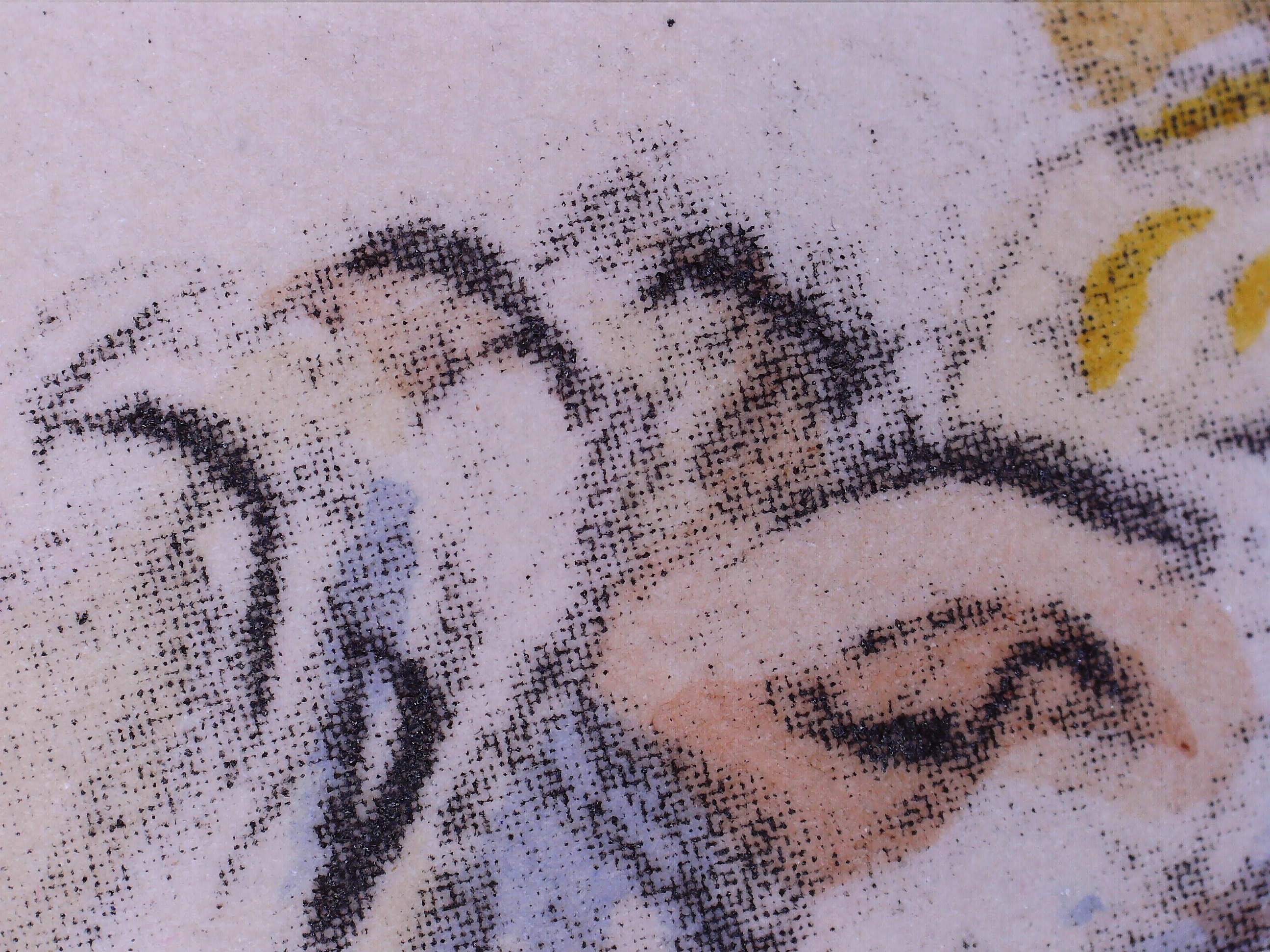
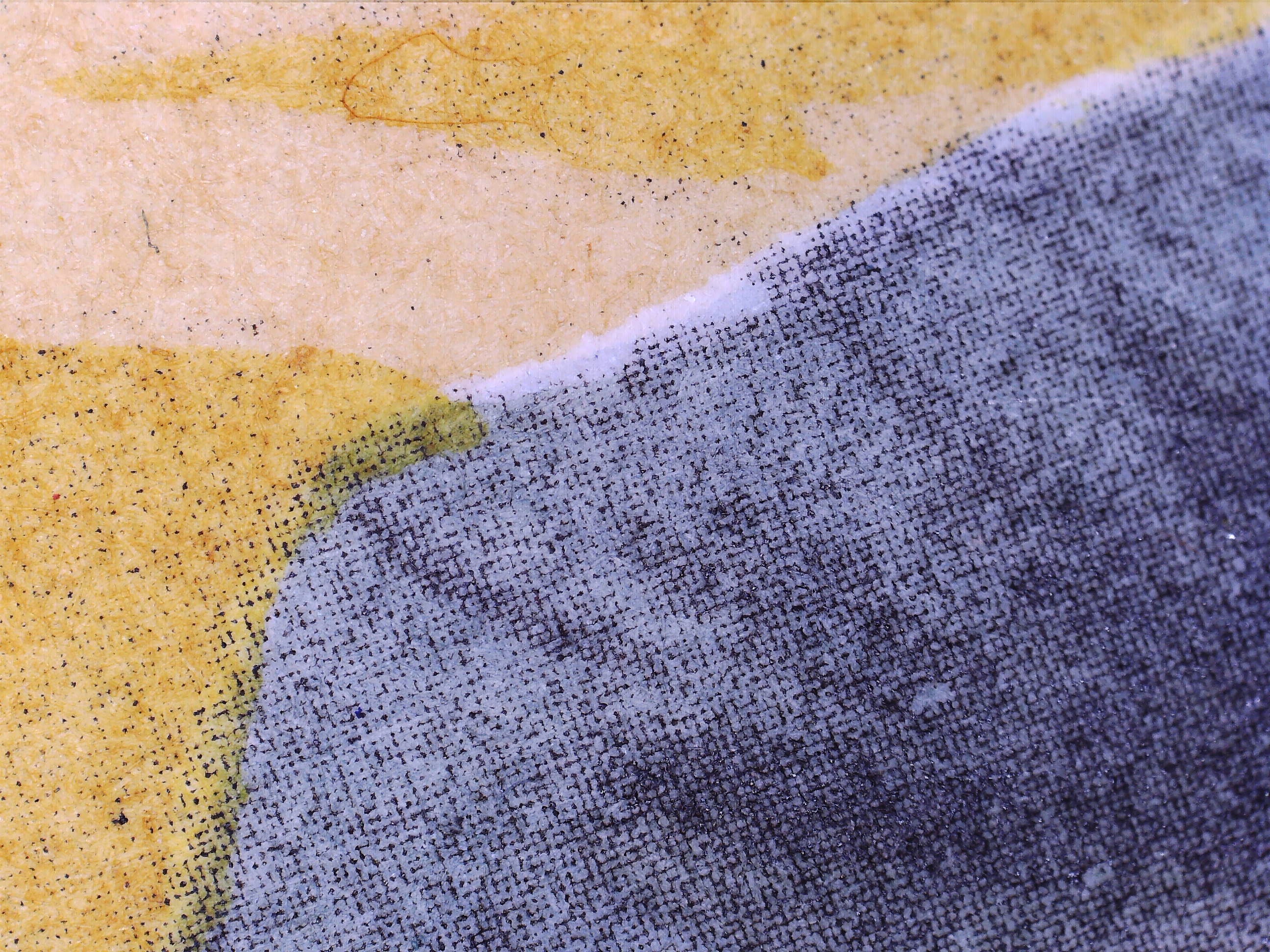
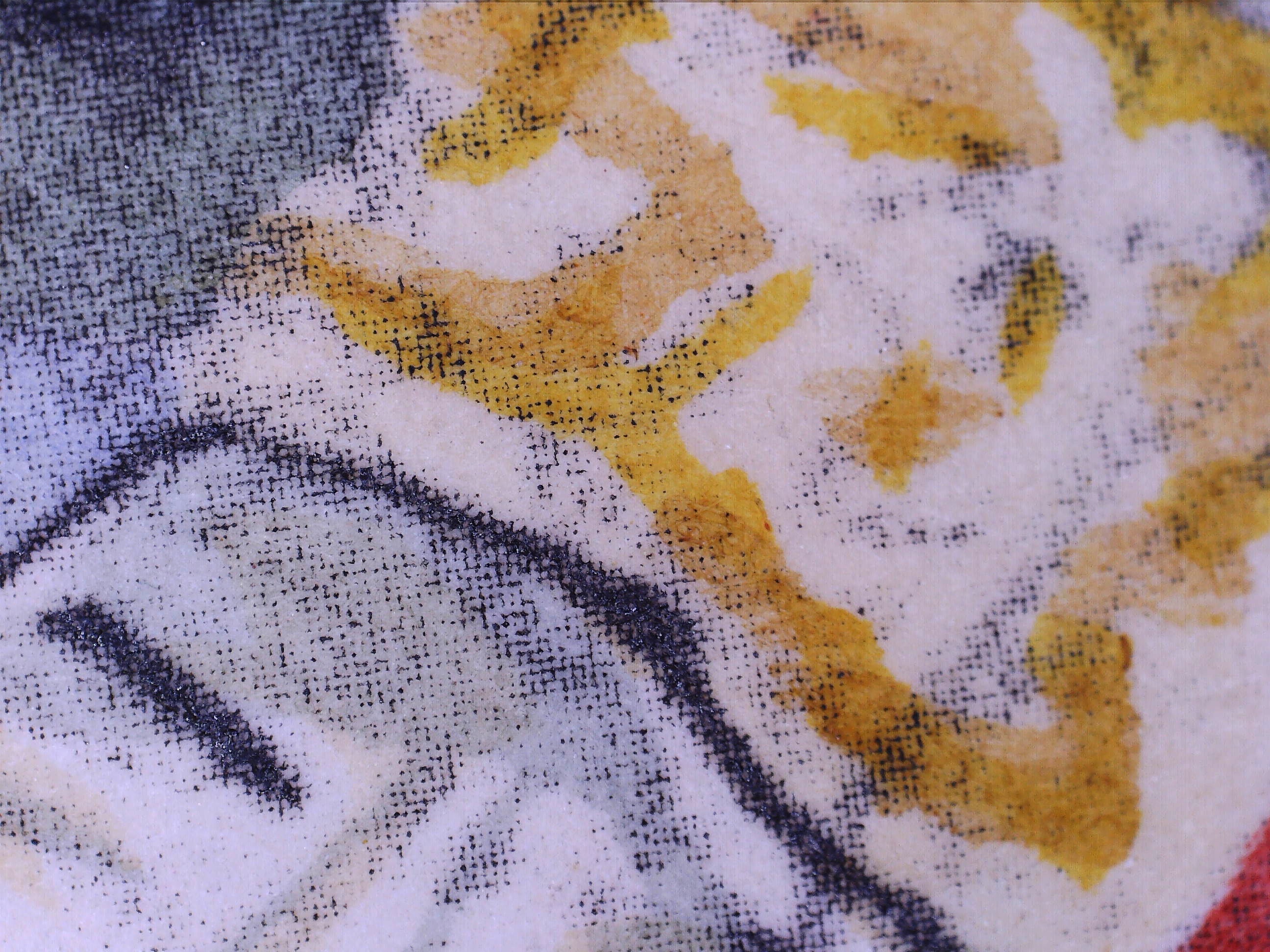
-
![Gordon Norton Ray. The Illustrator and the Book in England from 1790 to 1914 / Bibl. descript. Thomas V. Lange, photo. by Charles V. Passela. The Pierpont Morgan Library, Oxford University Press. — Oxford : Oxford Univ. Pr., 1976. — pp.: [i-viii] ix-xxxiii [1], [1-2] 3-336 [4], illustr.](https://varshavskycollection.com/wp-content/uploads/2021/02/LIB-2438.2020-a-500x653.jpeg) Title page: The | Illustrator | and the Book | in England | from | 1790 to 1914 | Gordon N. Ray | The Pierpont Morgan Library | Oxford University Press || Pagination: [i-viii] ix-xxxiii [xxxiv], [1-2] 3-336 [4], illustr. Binding: 30.5 x 23.5 cm; publisher’s blue cloth, gilt lettering in a figural frame to front, gilt lettering to spine, pictorial endpapers. Ex-lib (University of Virginia). Contributors: Ray, Gordon Norton (American, 1915 – 1986) – author. Lange, Thomas V. – formal bibliographical description. Passela, Charles V. – photography. The Pierpont Morgan Library – Copyright © 1976
Title page: The | Illustrator | and the Book | in England | from | 1790 to 1914 | Gordon N. Ray | The Pierpont Morgan Library | Oxford University Press || Pagination: [i-viii] ix-xxxiii [xxxiv], [1-2] 3-336 [4], illustr. Binding: 30.5 x 23.5 cm; publisher’s blue cloth, gilt lettering in a figural frame to front, gilt lettering to spine, pictorial endpapers. Ex-lib (University of Virginia). Contributors: Ray, Gordon Norton (American, 1915 – 1986) – author. Lange, Thomas V. – formal bibliographical description. Passela, Charles V. – photography. The Pierpont Morgan Library – Copyright © 1976 -
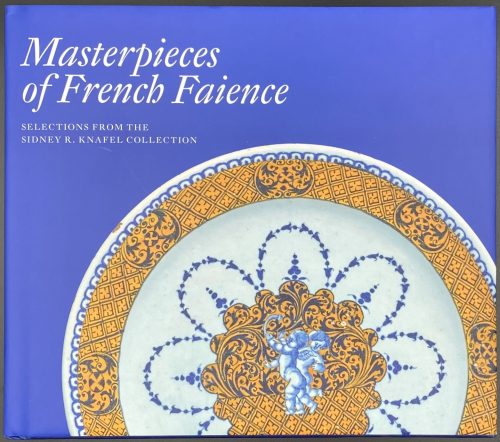 Title: Masterpieces | of French Faience | SELECTIONS FROM THE | SIDNEY R. KNAFEL COLLECTION | Charlotte Vignon | with Sidney R. Knafel | The Frick Collection, New York | in association with D Giles Limited, London | {device} || Pagination: [1-6] 7-72. Contributors: Charlotte Vignon (American, b. c. 1975) – Curator of Decorative Arts at The Frick Collection. Sidney R. Knafel (American, b. c. 1950) – Collector.
Title: Masterpieces | of French Faience | SELECTIONS FROM THE | SIDNEY R. KNAFEL COLLECTION | Charlotte Vignon | with Sidney R. Knafel | The Frick Collection, New York | in association with D Giles Limited, London | {device} || Pagination: [1-6] 7-72. Contributors: Charlotte Vignon (American, b. c. 1975) – Curator of Decorative Arts at The Frick Collection. Sidney R. Knafel (American, b. c. 1950) – Collector. -
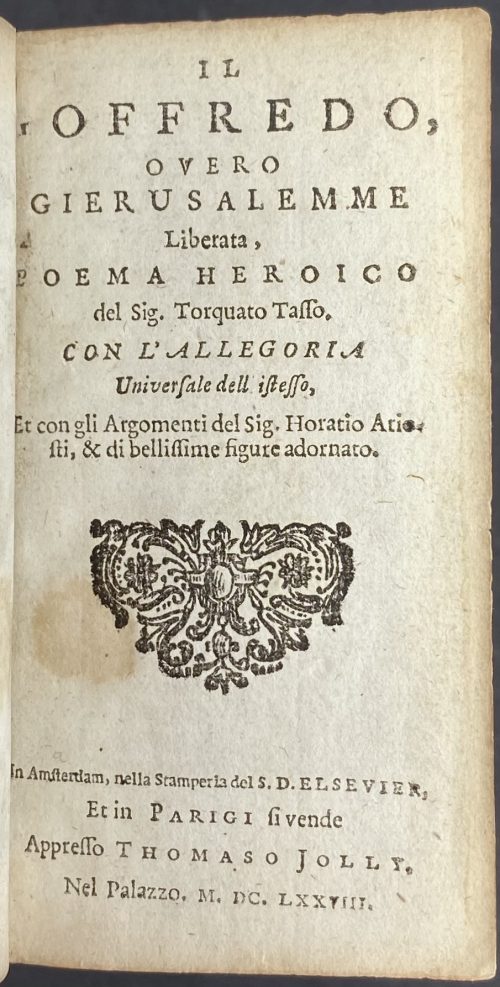 Vol. 1: Engraved t.p.: An architectural setting with flags and arms, and sitting male and female figures in armour, perhaps representing Tancredi and Clorinda, with lettering above their heads: “GIERVSA– | LEMME | LIBERATA”. Title-page: IL | GOFFREDO, | OVERO | GIERUSALEMME | Liberata , | POEMA HEROICO | del Sig. Torquato Tasso. | CON L’ ALLEGORIA | Universale dell istesso, | Et con gli Argomenti del Sig. Horatio Ario- | sti, & di belissime figure adornato. | {woodcut element} | In Amsterdam, nella Stamperia del S.D. ELZEVIER, | Et in Parigi, si vende | Appresso Thomaso Jolly. | Nel Palazzo, M. DC. LXXVIII. || Collation: 8vo; [A1] 1st blank, engraved t.p., [A2] letterpress t.p., pp. [1-4]; signatures start at A3, pagination starts at p. 37; Allegoria: A3-B1, pp. [5-18], Tavola: B2-C2, pp. [19-36]; Il Goffredo: C3-R8, pp. 37-271 [272]. Total A-R8: 136 leaves (272 pages), plus 11 plates, incl. engraved t.p., and frontispiece (sculptural bust portrait of Torquato Tasso in a laurel wreath, with a lettered plate below “TORQVATO | TASSO”). Vol. 1: Title-page: Similar but “TOMO II.” after “sti, & di belissime figure adornato.” and before the woodcut element. Collation: 8vo; 1st blank, letterpress t.p., signatures start at A3, p. 5; A-S8, pp. [4] 5-285 [3]. Total A-S8: 144 leaves (288 pages) plus 10 engraved plates. Binding: Two volumes 15 x 6 cm, uniformly bound in 19th-century green morocco, gilt triple-fillet border, bull heads at corners, spine with raised bands, gilt in compartments, two gilt-lettered crimson labels, blue endpapers, 2 blank laid paper leaves in the front, AEG. Contributors: Torquato Tasso (Italian, 1544 –1595) – author. Daniel Elzevir (Dutch, 1626-1680) – publisher. Thomas Jolly (French, fl. 1648 – 1694) – publisher.
Vol. 1: Engraved t.p.: An architectural setting with flags and arms, and sitting male and female figures in armour, perhaps representing Tancredi and Clorinda, with lettering above their heads: “GIERVSA– | LEMME | LIBERATA”. Title-page: IL | GOFFREDO, | OVERO | GIERUSALEMME | Liberata , | POEMA HEROICO | del Sig. Torquato Tasso. | CON L’ ALLEGORIA | Universale dell istesso, | Et con gli Argomenti del Sig. Horatio Ario- | sti, & di belissime figure adornato. | {woodcut element} | In Amsterdam, nella Stamperia del S.D. ELZEVIER, | Et in Parigi, si vende | Appresso Thomaso Jolly. | Nel Palazzo, M. DC. LXXVIII. || Collation: 8vo; [A1] 1st blank, engraved t.p., [A2] letterpress t.p., pp. [1-4]; signatures start at A3, pagination starts at p. 37; Allegoria: A3-B1, pp. [5-18], Tavola: B2-C2, pp. [19-36]; Il Goffredo: C3-R8, pp. 37-271 [272]. Total A-R8: 136 leaves (272 pages), plus 11 plates, incl. engraved t.p., and frontispiece (sculptural bust portrait of Torquato Tasso in a laurel wreath, with a lettered plate below “TORQVATO | TASSO”). Vol. 1: Title-page: Similar but “TOMO II.” after “sti, & di belissime figure adornato.” and before the woodcut element. Collation: 8vo; 1st blank, letterpress t.p., signatures start at A3, p. 5; A-S8, pp. [4] 5-285 [3]. Total A-S8: 144 leaves (288 pages) plus 10 engraved plates. Binding: Two volumes 15 x 6 cm, uniformly bound in 19th-century green morocco, gilt triple-fillet border, bull heads at corners, spine with raised bands, gilt in compartments, two gilt-lettered crimson labels, blue endpapers, 2 blank laid paper leaves in the front, AEG. Contributors: Torquato Tasso (Italian, 1544 –1595) – author. Daniel Elzevir (Dutch, 1626-1680) – publisher. Thomas Jolly (French, fl. 1648 – 1694) – publisher. -
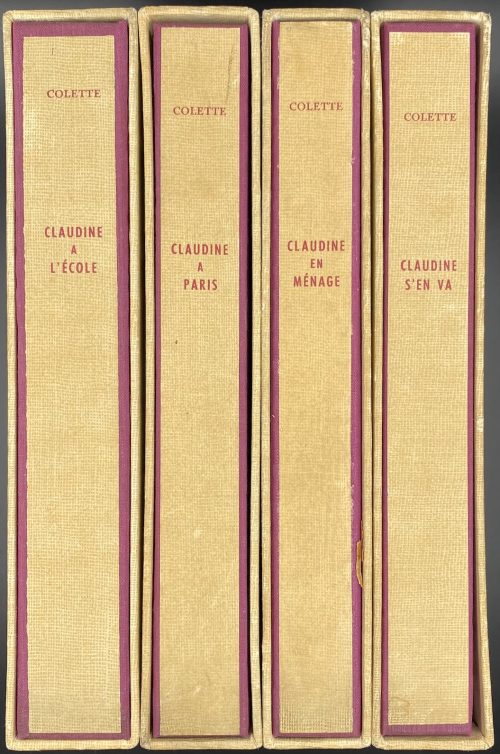 (1) Claudine à l'école: 1st blank and limitation leaves uncut, t.p. / blank ; [1-6] 7-206 [2], colophon "IMPRIMÉ EN BELGIQUE"; 208 pages (104 leaves) plus 12 plates. COLETTE | Claudine | {vignette} | à l'école | ILLUSTRÉE PAR | RENÉE RINGEL | « Leurs Chefs-d'œuvre » | AUX ÉDITIONS TERRES LATINES || (2) Claudine à Paris: 1st blank and limitation leaves uncut, t.p. / blank ; [1-6] 7-153 [3], colophon "IMPRIMÉ EN BELGIQUE"; 156 pages (78 leaves) plus 12 plates. COLETTE | Claudine | {vignette} | à Paris | ILLUSTRÉE PAR | RENÉE RINGEL | « Leurs Chefs-d'œuvre » | AUX ÉDITIONS TERRES LATINES || (3) Claudine en ménage: 1st blank and limitation leaves uncut, t.p. / blank ; [1-6] 7-150 [2], colophon "IMPRIMÉ EN BELGIQUE"; 152 pages (76 leaves) plus 12 plates. COLETTE | Claudine | {vignette} | en ménage | ILLUSTRÉE PAR | RENÉE RINGEL | « Leurs Chefs-d'œuvre » | AUX ÉDITIONS TERRES LATINES || (4) Claudine s'en va: 1st blank and limitation leaves uncut, t.p. / blank ; [1-6] 7-128 [4], colophon "IMPRIMÉ EN BELGIQUE"; 132 pages (66 leaves) plus 12 plates. COLETTE | Claudine | {vignette} | s'en va | ILLUSTRÉE PAR | RENÉE RINGEL | « Leurs Chefs-d'œuvre » | AUX ÉDITIONS TERRES LATINES || Illustrations: in each volume, there are 12 plates extraneous to collation, incl. frontispiece, stencil-coloured (au pochoir) collotype reproductions after drawings by Renée Ringel, and numerous in-text b/w illustrations. Binding: 4 volumes uniformly bound in French flapped pictorial wrappers, spine with lettering and vignette, each in a canvas double slipcase 22 x 17.5 cm, with lettering to spine. Edition: Limited to 1800 copies, of which this is copy № 365, printed by Jean de Clercq, plates printed by Thill, colouring by Ateliers du coloris d’art. Contributors: Sidonie-Gabrielle Colette [a.k.a. Colette] (French, 1873 – 1954) Renée Ringel – nothing is known so far.
(1) Claudine à l'école: 1st blank and limitation leaves uncut, t.p. / blank ; [1-6] 7-206 [2], colophon "IMPRIMÉ EN BELGIQUE"; 208 pages (104 leaves) plus 12 plates. COLETTE | Claudine | {vignette} | à l'école | ILLUSTRÉE PAR | RENÉE RINGEL | « Leurs Chefs-d'œuvre » | AUX ÉDITIONS TERRES LATINES || (2) Claudine à Paris: 1st blank and limitation leaves uncut, t.p. / blank ; [1-6] 7-153 [3], colophon "IMPRIMÉ EN BELGIQUE"; 156 pages (78 leaves) plus 12 plates. COLETTE | Claudine | {vignette} | à Paris | ILLUSTRÉE PAR | RENÉE RINGEL | « Leurs Chefs-d'œuvre » | AUX ÉDITIONS TERRES LATINES || (3) Claudine en ménage: 1st blank and limitation leaves uncut, t.p. / blank ; [1-6] 7-150 [2], colophon "IMPRIMÉ EN BELGIQUE"; 152 pages (76 leaves) plus 12 plates. COLETTE | Claudine | {vignette} | en ménage | ILLUSTRÉE PAR | RENÉE RINGEL | « Leurs Chefs-d'œuvre » | AUX ÉDITIONS TERRES LATINES || (4) Claudine s'en va: 1st blank and limitation leaves uncut, t.p. / blank ; [1-6] 7-128 [4], colophon "IMPRIMÉ EN BELGIQUE"; 132 pages (66 leaves) plus 12 plates. COLETTE | Claudine | {vignette} | s'en va | ILLUSTRÉE PAR | RENÉE RINGEL | « Leurs Chefs-d'œuvre » | AUX ÉDITIONS TERRES LATINES || Illustrations: in each volume, there are 12 plates extraneous to collation, incl. frontispiece, stencil-coloured (au pochoir) collotype reproductions after drawings by Renée Ringel, and numerous in-text b/w illustrations. Binding: 4 volumes uniformly bound in French flapped pictorial wrappers, spine with lettering and vignette, each in a canvas double slipcase 22 x 17.5 cm, with lettering to spine. Edition: Limited to 1800 copies, of which this is copy № 365, printed by Jean de Clercq, plates printed by Thill, colouring by Ateliers du coloris d’art. Contributors: Sidonie-Gabrielle Colette [a.k.a. Colette] (French, 1873 – 1954) Renée Ringel – nothing is known so far. -
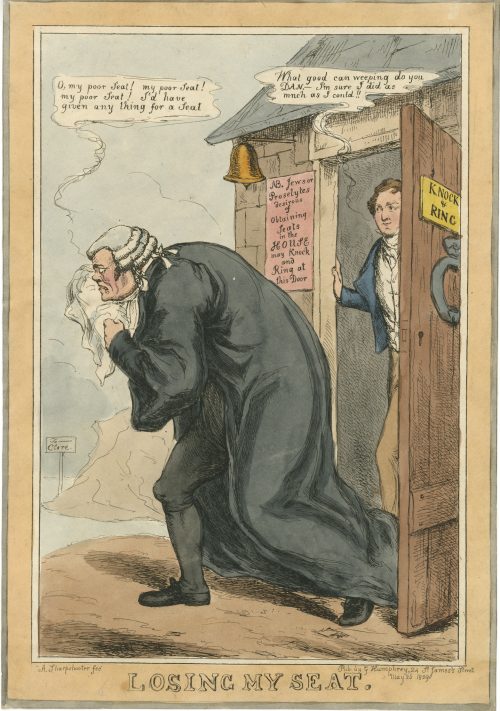 Hand-coloured etching by an anonymous British artist, printed on May 26, 1829, in London. Description by British Museum (1868,0808.8988): "O'Connell, in wig and gown, walks to the left from the massive door of a small stone building, stooping, and holding his handkerchief to his right eye. He wails: 'O, my poor Seat! my poor Seat! my poor Seat! I'd have given any thing for a seat.' In the doorway (right) stands Peel, saying with wary blandness: 'What good can weeping do you Dan.—I'm sure I did as much as I could!!' Above the large knocker on the plank door is 'Knock & Ring'. There is a projecting bell, above a placard: 'NB. Jews or Proselytes desirous of Obtaining Seats in the House may Knock and Ring at this Door.' One corner of "the House", a small stone shed, is depicted. O'Connell is walking towards a strip of water, across which is a mountain, with a board pointing 'To — Clare'. Comment by BM: "Catholic Emancipation raised high hopes among Jews; the first Bill, after a petition from Jews in Liverpool, was introduced 15 Apr. 1830, but Jewish Emancipation did not become law till 1858." Inscription under the frame with title, "A. Sharpshooter fec", text within image and publication line: "Pub. by G. Humphrey, 24 St. James's Street May 26 1829". Size: 37.5 x 26 cm.
Hand-coloured etching by an anonymous British artist, printed on May 26, 1829, in London. Description by British Museum (1868,0808.8988): "O'Connell, in wig and gown, walks to the left from the massive door of a small stone building, stooping, and holding his handkerchief to his right eye. He wails: 'O, my poor Seat! my poor Seat! my poor Seat! I'd have given any thing for a seat.' In the doorway (right) stands Peel, saying with wary blandness: 'What good can weeping do you Dan.—I'm sure I did as much as I could!!' Above the large knocker on the plank door is 'Knock & Ring'. There is a projecting bell, above a placard: 'NB. Jews or Proselytes desirous of Obtaining Seats in the House may Knock and Ring at this Door.' One corner of "the House", a small stone shed, is depicted. O'Connell is walking towards a strip of water, across which is a mountain, with a board pointing 'To — Clare'. Comment by BM: "Catholic Emancipation raised high hopes among Jews; the first Bill, after a petition from Jews in Liverpool, was introduced 15 Apr. 1830, but Jewish Emancipation did not become law till 1858." Inscription under the frame with title, "A. Sharpshooter fec", text within image and publication line: "Pub. by G. Humphrey, 24 St. James's Street May 26 1829". Size: 37.5 x 26 cm. -
 Two volumes, one with text, another with plates, 31.9 x 24.2 cm each, uniformly bound in bead-grain grey cloth, silver lettering to spine, black label with gilt lettering. Title-page: STEFANO DELLA BELLA | Catalogue Raisonné | Alexandre De Vesme | with | Introduction and Additions | by | Phyllis Dearborn Massar | — | TEXT (PLATES) | — | {publisher’s device} |Collectors Editions || Text: [i-vi] vii-viii [1-2] 3-230 [2], ils. Plates: [6] [1-3] 4-241 [242]. Contributors: Stefano Della Bella (Italian, 1610 – 1664) Alessandro Baudi di Vesme [Alexandre de Vesme] (Italian, 1854 – 1923) Phyllis Dearborn Massar (American, 1916 – 2011)
Two volumes, one with text, another with plates, 31.9 x 24.2 cm each, uniformly bound in bead-grain grey cloth, silver lettering to spine, black label with gilt lettering. Title-page: STEFANO DELLA BELLA | Catalogue Raisonné | Alexandre De Vesme | with | Introduction and Additions | by | Phyllis Dearborn Massar | — | TEXT (PLATES) | — | {publisher’s device} |Collectors Editions || Text: [i-vi] vii-viii [1-2] 3-230 [2], ils. Plates: [6] [1-3] 4-241 [242]. Contributors: Stefano Della Bella (Italian, 1610 – 1664) Alessandro Baudi di Vesme [Alexandre de Vesme] (Italian, 1854 – 1923) Phyllis Dearborn Massar (American, 1916 – 2011) -
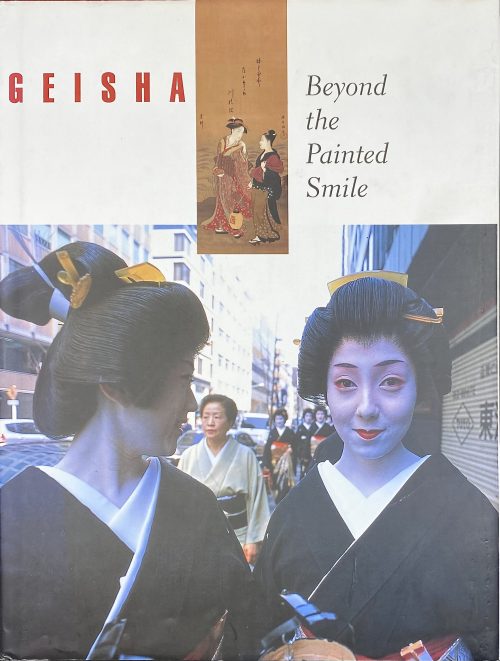 Description: one volume, 31.3 x 23.8 cm, bound in crimson cloth with gilt lettering to spine, in a pictorial dust jacket, lettered to front: GEISHA | {image} | Beyond | the | Painted | Smile | {image} || Title-page: GEISHA | Beyond | the | Painted | Smile | edited by the | Peabody Essex | Museum | published by | George Braziller, Inc. | in association with the | Peabody Essex Museum || Pagination: 1-159 [160], ils. Contributors: Lisa Dalby, Lesley Downer, Arthur Golden, Peter M. Grilli, Money L. Hickman, Allen Hockley, Andrew L. Maske, Yoko Yamamoto.
Description: one volume, 31.3 x 23.8 cm, bound in crimson cloth with gilt lettering to spine, in a pictorial dust jacket, lettered to front: GEISHA | {image} | Beyond | the | Painted | Smile | {image} || Title-page: GEISHA | Beyond | the | Painted | Smile | edited by the | Peabody Essex | Museum | published by | George Braziller, Inc. | in association with the | Peabody Essex Museum || Pagination: 1-159 [160], ils. Contributors: Lisa Dalby, Lesley Downer, Arthur Golden, Peter M. Grilli, Money L. Hickman, Allen Hockley, Andrew L. Maske, Yoko Yamamoto. -
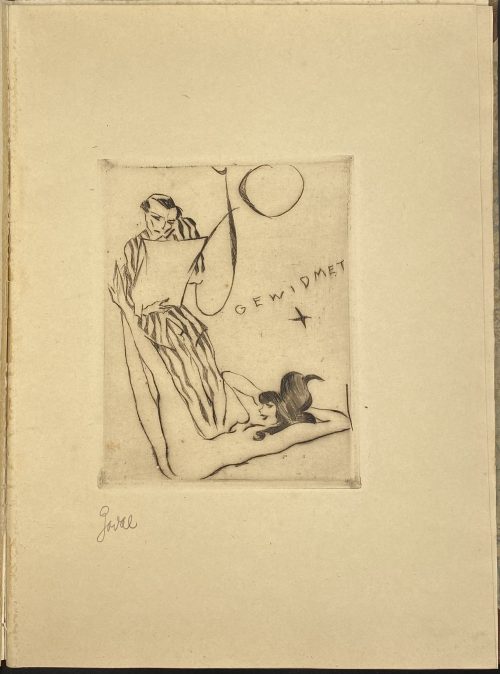 Half calf binding 33.5 x 25 cm, gilt lettering within rules “GODAL | JO”, engraved title-page and 9 etchings printed in sepia on sheets 32.5 x 24 cm of thick wove paper, pencil signed, presumably, by the artist; a newspaper clipping tipped-in. The number of copies is unknown. Ticket to front pastedown: "Haeusgen |8 München 90 | Reinekestrasse 36" According to seller: “Extraordinarily rare series of erotic original etchings. - Cf. Bilderlexikon II, 451 u. Vollmer II, 261 - According to KVK not in any library”. Contributors: Erich Godal [Erich Goldbaum] (German-Jewish, 1899 – 1969) – artist.
Half calf binding 33.5 x 25 cm, gilt lettering within rules “GODAL | JO”, engraved title-page and 9 etchings printed in sepia on sheets 32.5 x 24 cm of thick wove paper, pencil signed, presumably, by the artist; a newspaper clipping tipped-in. The number of copies is unknown. Ticket to front pastedown: "Haeusgen |8 München 90 | Reinekestrasse 36" According to seller: “Extraordinarily rare series of erotic original etchings. - Cf. Bilderlexikon II, 451 u. Vollmer II, 261 - According to KVK not in any library”. Contributors: Erich Godal [Erich Goldbaum] (German-Jewish, 1899 – 1969) – artist. -
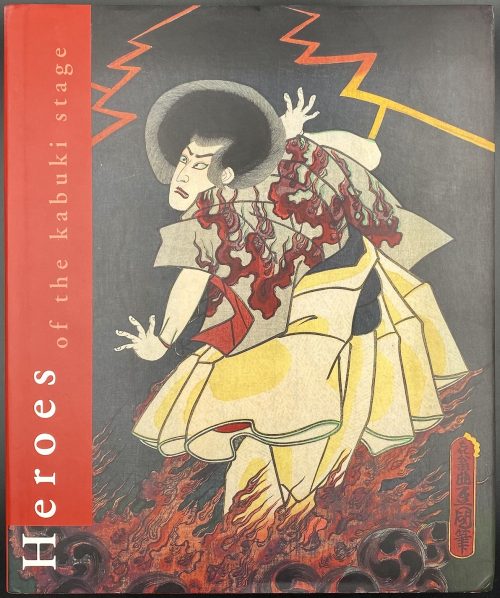 One hardcover volume, 30.2 x 25.3 cm, in red cloth blind stamped to front and spine with lettering, in pictorial dust jacket; pp.: [1-4] 5-359 [360], total 180 leaves, profusely illustrated. Subject: Japan; Theatre; Kabuki theatre; Kabuki actors; Woodblock prints. Contributors: Arendie Herwig (Dutch, fl. 2002 – 2016); Henk Herwig (Dutch, fl. 2002 – 2017).
One hardcover volume, 30.2 x 25.3 cm, in red cloth blind stamped to front and spine with lettering, in pictorial dust jacket; pp.: [1-4] 5-359 [360], total 180 leaves, profusely illustrated. Subject: Japan; Theatre; Kabuki theatre; Kabuki actors; Woodblock prints. Contributors: Arendie Herwig (Dutch, fl. 2002 – 2016); Henk Herwig (Dutch, fl. 2002 – 2017). -
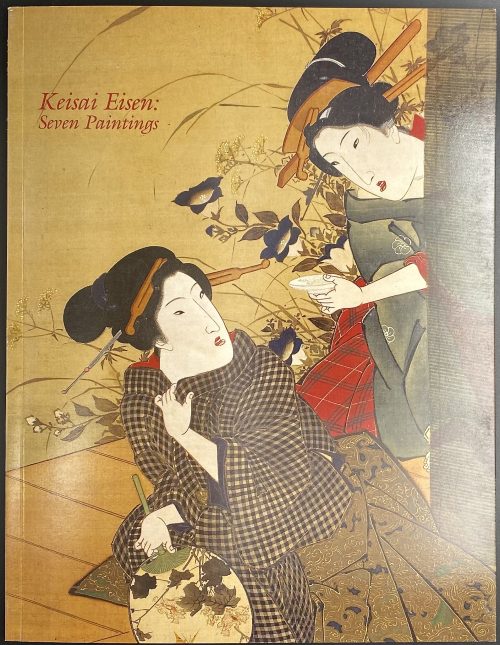 Softcover, in pictorial flapped wrappers, 28 x 21.7 cm, 7 entries, with colour illustrations. Catalogue # 13 of the sales exhibition on September 15-19, 2009 in NY; pagination: [1-3] 4-38 [2], ils. Contributor: Sebastian Izzard
Softcover, in pictorial flapped wrappers, 28 x 21.7 cm, 7 entries, with colour illustrations. Catalogue # 13 of the sales exhibition on September 15-19, 2009 in NY; pagination: [1-3] 4-38 [2], ils. Contributor: Sebastian Izzard -
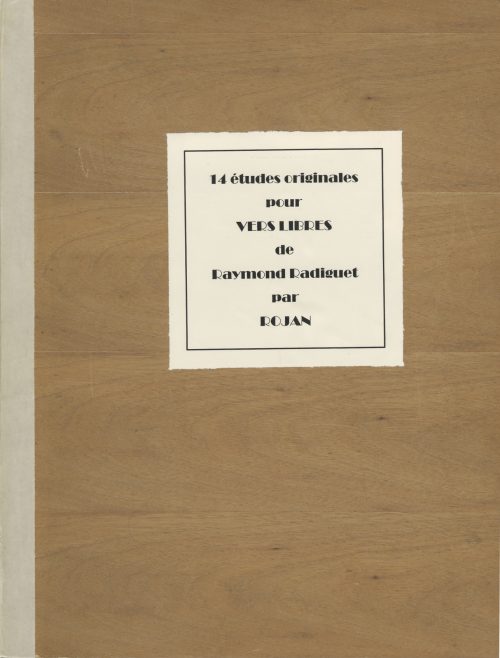 Portfolio of 14 original watercolour illustrations for Vers Libres by Raymond Radiguet. Painted on wove paper of different sizes, each mounted in a passe-partout 39,5 x 33 cm and enclosed in a flapped portfolio with a white label to front cover lettered "14 études originales | pour | VERS LIBRES | de | Raymond Radiguet | par | ROJAN". For published versions see:
Portfolio of 14 original watercolour illustrations for Vers Libres by Raymond Radiguet. Painted on wove paper of different sizes, each mounted in a passe-partout 39,5 x 33 cm and enclosed in a flapped portfolio with a white label to front cover lettered "14 études originales | pour | VERS LIBRES | de | Raymond Radiguet | par | ROJAN". For published versions see:- [LIB-2830.2021] Raymond Radiguet. Vers libres / [Illustrés par Rojan]. — Champigny: Au Panier Fleuri [i.e. Paris, René Bonnel, c. 1935].
- [LIB-2827.2021] Raymond Radiguet. Vers libres / Illustrés par Rojan. — Nogent: Au Panier Fleuri [i.e. Paris, c. 1937].
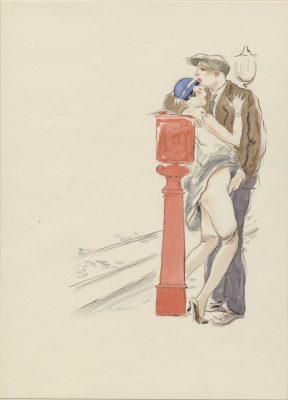
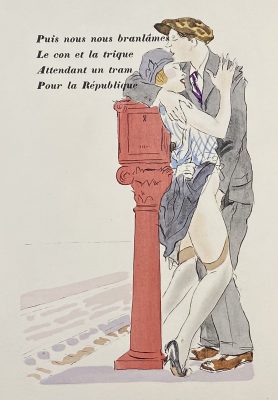



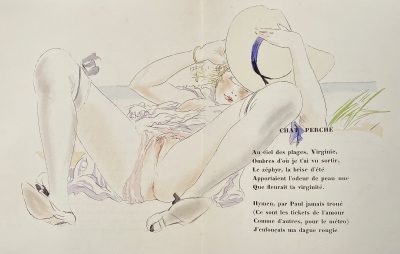
-
 Artist: Utagawa Yoshitsuya [歌川 芳艶] (Japanese, 1822 – 1866). Publisher: Kojimaya Jūbei [小島屋重兵衛] (Japanese, c. 1797 – 1869). Date seal and double nanushi censor seals: Kunigasa & Yoshimura, Kōka 5 (1849). Signed: Ichieisai Yoshitsuya ga [英斎芳艶画] in a red double gourd cartouche. Two men are fishing with a net off the coast of Shinagawa, in the Edo Bay.
Artist: Utagawa Yoshitsuya [歌川 芳艶] (Japanese, 1822 – 1866). Publisher: Kojimaya Jūbei [小島屋重兵衛] (Japanese, c. 1797 – 1869). Date seal and double nanushi censor seals: Kunigasa & Yoshimura, Kōka 5 (1849). Signed: Ichieisai Yoshitsuya ga [英斎芳艶画] in a red double gourd cartouche. Two men are fishing with a net off the coast of Shinagawa, in the Edo Bay. -
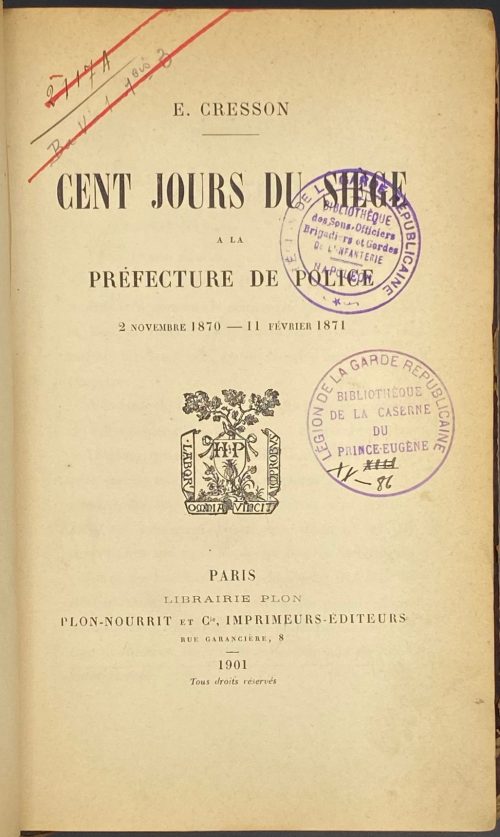 Title-page: E. CRESSON |—| CENT JOURS DE SIÈGE | A LA | PRÉFECTURE DE POLICE | 2 NOVEMBRE 1870 — 11 FÉVRIER 1871 | {publisher’s device} | PARIS | LIBRAIRIE PLON | PLON-NOURRIT ET Cie, IMPRIMEURS-ÉDITEURS | RUE GARANCIÈRE, 8 | 1901 | Tous droits réservés || Description: 8vo, 22 x 14.5 cm, quarter brown calf over marbled boards, flat spine with gilt fillets, gilt lettering, marbled endpapers; inscriptions to t.p.: 2117 A | Ba V –1 1bis 3; ink stamps to t.p.: (1) « LÉGION DE LA GARDE REPUBLICAINE | BIBLIOTÈQUE | des Sous-Officiers | Brigadiers et Gardes | DE L’INFANTERIA | NAPOLEON » ; (2) « LÉGION DE LA GARDE REPUBLICAINE | BIBLIOTÈQUE | DE LA CASERNE | DU | PRINCE-EUGÈNE | (hand) XIII | XX—86 » Collation: 8vo; π6 1-248 252, total 200 leaves. Pagination: [2] [i-v] vi-x, [1] 2-385 [3], total 400 pages. BNF: ark:/12148/bpt6k4936n Author: Ernest Cresson (French, 1824 – 1902)
Title-page: E. CRESSON |—| CENT JOURS DE SIÈGE | A LA | PRÉFECTURE DE POLICE | 2 NOVEMBRE 1870 — 11 FÉVRIER 1871 | {publisher’s device} | PARIS | LIBRAIRIE PLON | PLON-NOURRIT ET Cie, IMPRIMEURS-ÉDITEURS | RUE GARANCIÈRE, 8 | 1901 | Tous droits réservés || Description: 8vo, 22 x 14.5 cm, quarter brown calf over marbled boards, flat spine with gilt fillets, gilt lettering, marbled endpapers; inscriptions to t.p.: 2117 A | Ba V –1 1bis 3; ink stamps to t.p.: (1) « LÉGION DE LA GARDE REPUBLICAINE | BIBLIOTÈQUE | des Sous-Officiers | Brigadiers et Gardes | DE L’INFANTERIA | NAPOLEON » ; (2) « LÉGION DE LA GARDE REPUBLICAINE | BIBLIOTÈQUE | DE LA CASERNE | DU | PRINCE-EUGÈNE | (hand) XIII | XX—86 » Collation: 8vo; π6 1-248 252, total 200 leaves. Pagination: [2] [i-v] vi-x, [1] 2-385 [3], total 400 pages. BNF: ark:/12148/bpt6k4936n Author: Ernest Cresson (French, 1824 – 1902) -
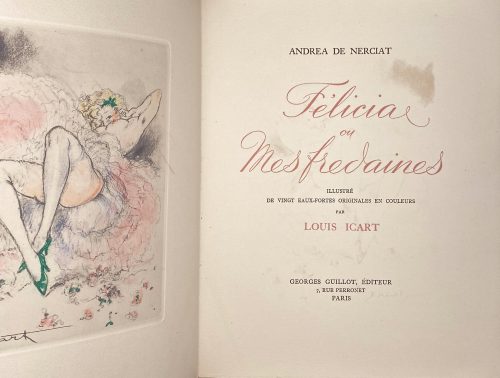 Unbound volume in publisher’s wrappers, lettered in red “FELICIA | ou | mes fredaines”, in 29.7 x 23.6 cm purple and blue diaper cloth double-slipcase with a lettered label, 52 leaves folded in half, first and last blank leaves within the wrappers, pagination: [8] 1-186 [2] [4] (200 pages total); illustrated with 20 coloured etchings after watercolours by Louis Icart (signed), plates within collation, 8 b/w tail-pieces and coloured initials; the edition enriched with an original watercolour, an etched copperplate, and two suites of plates, one in black and one in sanguine. Edition printed on thick wove paper, margins untrimmed. Title-page (purple and black): ANDRÉA DE NERCIAT | Félicia | ou | Mes fredaines | ILLUSTRÉ | DE VINGT EAUX-FORTES ORIGINALES EN COULEURS | PAR | LOUIS ICART | GEORGES GUILLOT, ÉDITEUR | 7, RUE PERRONET | PARIS || Limitation: a print run of 500 copies numbered 1 to 500 plus 30 copies “exemplaires d’artiste, numbered I to XXX, of which this is number I. Catalogue raisonné:William R. Holland (1998): pp. 152-164. Ref.: [LIB-2785.2021] William R. Holland. Louis Icart: Erotica (A Schiffer book for collectors). — Atglen, PA: Schiffer Publishing Ltd., © 1998. Printed by Joseph Zichieri (text) and Manuel Robbe (etchings). Contributors: André-Robert Andréa de Nerciat (French, 1739 – 1800) – author. Louis Icart (French, 1888 – 1950) – artist. Solange et Georges Guillot, éditeurs – publisher (7, rue Perronet, Paris) Joseph Zichieri (Grench, mid-20th century) – printer. Ateliers en taille-douce de Manuel Robbe (French, 1872 – 1936) – engraver/printer. Watercolour:
Unbound volume in publisher’s wrappers, lettered in red “FELICIA | ou | mes fredaines”, in 29.7 x 23.6 cm purple and blue diaper cloth double-slipcase with a lettered label, 52 leaves folded in half, first and last blank leaves within the wrappers, pagination: [8] 1-186 [2] [4] (200 pages total); illustrated with 20 coloured etchings after watercolours by Louis Icart (signed), plates within collation, 8 b/w tail-pieces and coloured initials; the edition enriched with an original watercolour, an etched copperplate, and two suites of plates, one in black and one in sanguine. Edition printed on thick wove paper, margins untrimmed. Title-page (purple and black): ANDRÉA DE NERCIAT | Félicia | ou | Mes fredaines | ILLUSTRÉ | DE VINGT EAUX-FORTES ORIGINALES EN COULEURS | PAR | LOUIS ICART | GEORGES GUILLOT, ÉDITEUR | 7, RUE PERRONET | PARIS || Limitation: a print run of 500 copies numbered 1 to 500 plus 30 copies “exemplaires d’artiste, numbered I to XXX, of which this is number I. Catalogue raisonné:William R. Holland (1998): pp. 152-164. Ref.: [LIB-2785.2021] William R. Holland. Louis Icart: Erotica (A Schiffer book for collectors). — Atglen, PA: Schiffer Publishing Ltd., © 1998. Printed by Joseph Zichieri (text) and Manuel Robbe (etchings). Contributors: André-Robert Andréa de Nerciat (French, 1739 – 1800) – author. Louis Icart (French, 1888 – 1950) – artist. Solange et Georges Guillot, éditeurs – publisher (7, rue Perronet, Paris) Joseph Zichieri (Grench, mid-20th century) – printer. Ateliers en taille-douce de Manuel Robbe (French, 1872 – 1936) – engraver/printer. Watercolour: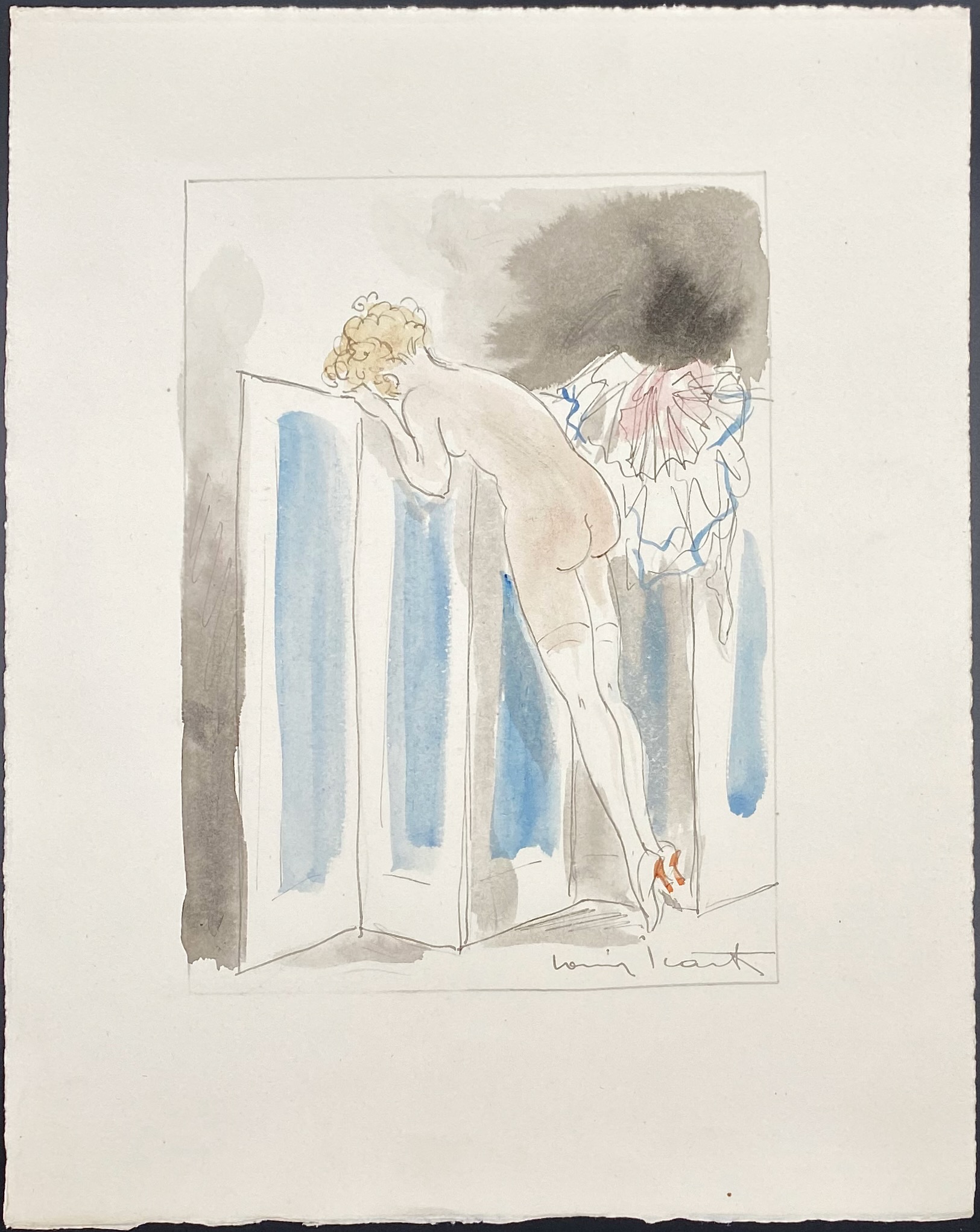 Copperplate:
Copperplate:
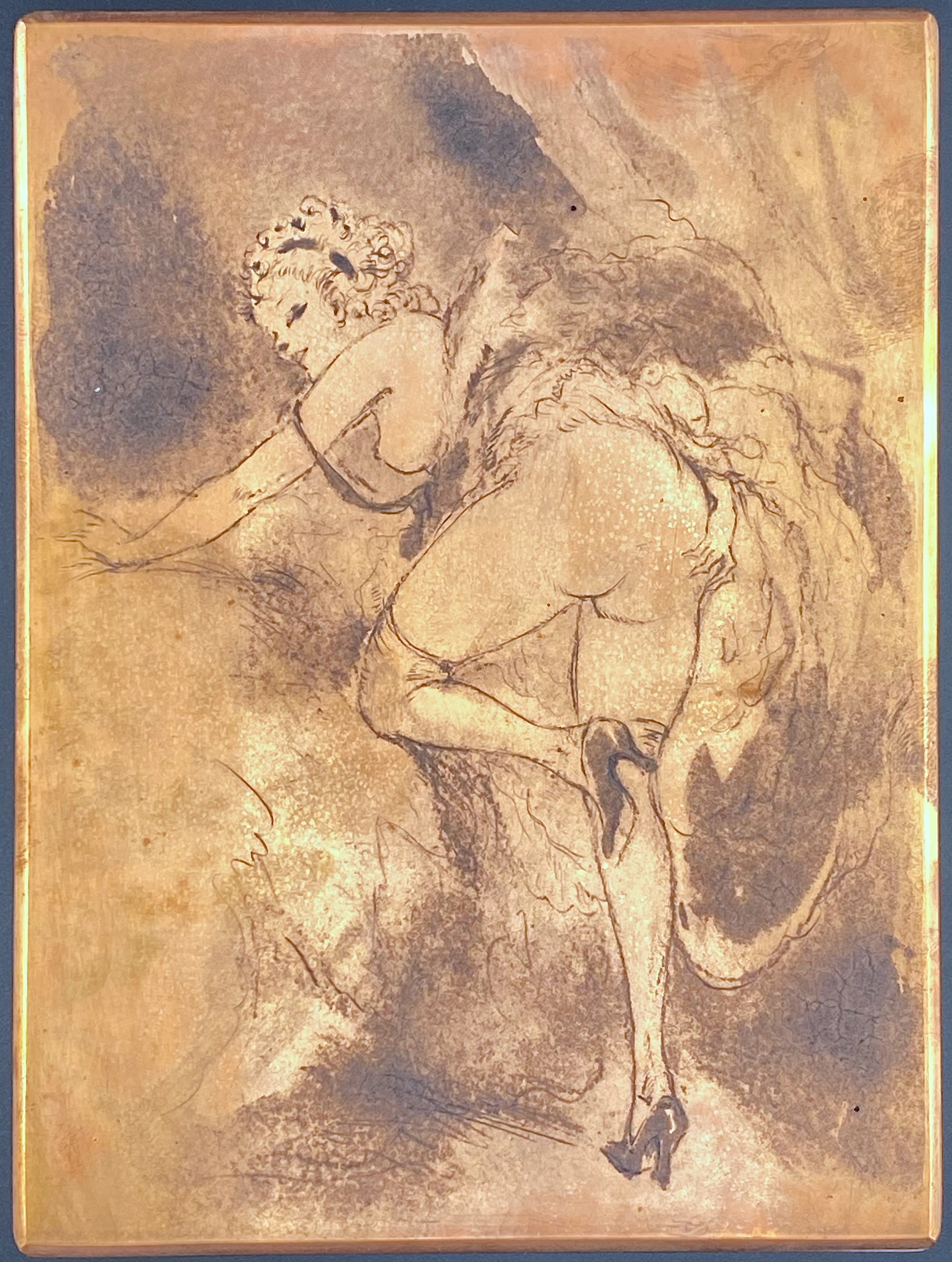
-
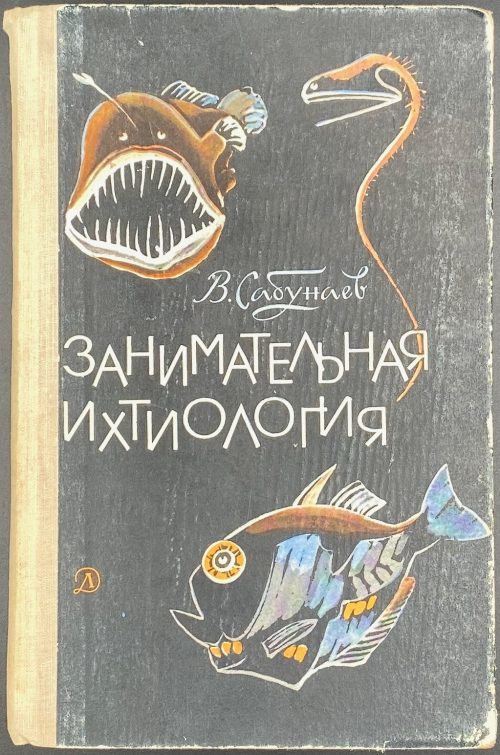 Hardcover, 20.5 x 13.5 cm, quarter cloth, pictorial boards, pp.: [2] 3-253 [3], ils., collated in-8vo: 1-188, total 128 leaves plus 2 leaves of colour plates. Title-page: В. САБУНАЕВ | ЗАНИМАТЕЛЬНАЯ | ИХТИОЛОГИЯ | {vignette} | ИЗДАТЕЛЬСТВО | “ДЕТСКАЯ ЛИТЕРАТУРА” | 1967. Print rub: 50,000 copies. Сабунаев, Виктор Борисович (Russian, 20th century) – author. Бианки, Елена Витальевна (Russian, 1922 – 2009) – artist.
Hardcover, 20.5 x 13.5 cm, quarter cloth, pictorial boards, pp.: [2] 3-253 [3], ils., collated in-8vo: 1-188, total 128 leaves plus 2 leaves of colour plates. Title-page: В. САБУНАЕВ | ЗАНИМАТЕЛЬНАЯ | ИХТИОЛОГИЯ | {vignette} | ИЗДАТЕЛЬСТВО | “ДЕТСКАЯ ЛИТЕРАТУРА” | 1967. Print rub: 50,000 copies. Сабунаев, Виктор Борисович (Russian, 20th century) – author. Бианки, Елена Витальевна (Russian, 1922 – 2009) – artist. -
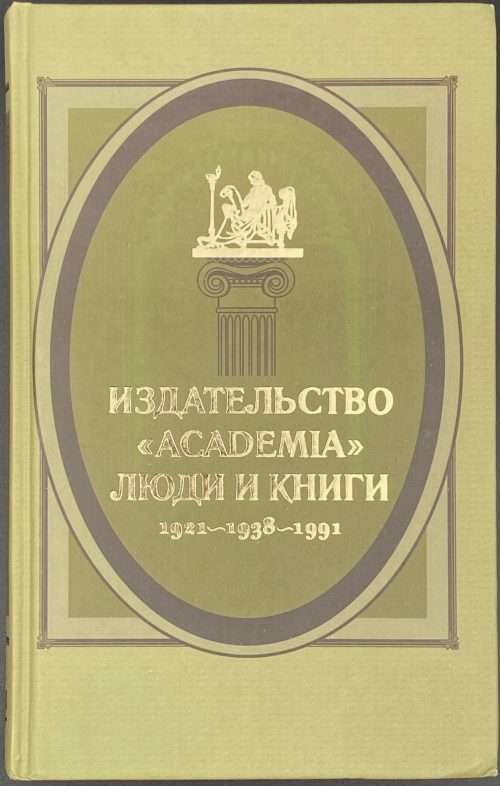 Hardcover, 20.7 x 13 cm, paper boards and spine, silver and gilt lettering, pictorial endpapers, pp.: [1-5] 6-321 [5] [10 advert.], in-text ill., total 336 pages plus 12 (8+4) leaves of plates. 944 entries (1921-1938), plus a list of new books published between 1991 and 2004. Title-page: В. В. Крылов | Е. В. Кичатова | ИЗДАТЕЛЬСТВО | «ACADEMIA» | ЛЮДИ И КНИГИ | 1921 ~ 1938 ~ 1991 | Под общей редакцией | В. А. Попова | ~ | {publisher’s device} | Москва | 2004 || Print run: 2,000 copeis. Contributors: Крылов, Вячеслав Викторович (Russian, 1940 – 2005) Кичатова, Екатерина Вячеславовна (Russian)
Hardcover, 20.7 x 13 cm, paper boards and spine, silver and gilt lettering, pictorial endpapers, pp.: [1-5] 6-321 [5] [10 advert.], in-text ill., total 336 pages plus 12 (8+4) leaves of plates. 944 entries (1921-1938), plus a list of new books published between 1991 and 2004. Title-page: В. В. Крылов | Е. В. Кичатова | ИЗДАТЕЛЬСТВО | «ACADEMIA» | ЛЮДИ И КНИГИ | 1921 ~ 1938 ~ 1991 | Под общей редакцией | В. А. Попова | ~ | {publisher’s device} | Москва | 2004 || Print run: 2,000 copeis. Contributors: Крылов, Вячеслав Викторович (Russian, 1940 – 2005) Кичатова, Екатерина Вячеславовна (Russian)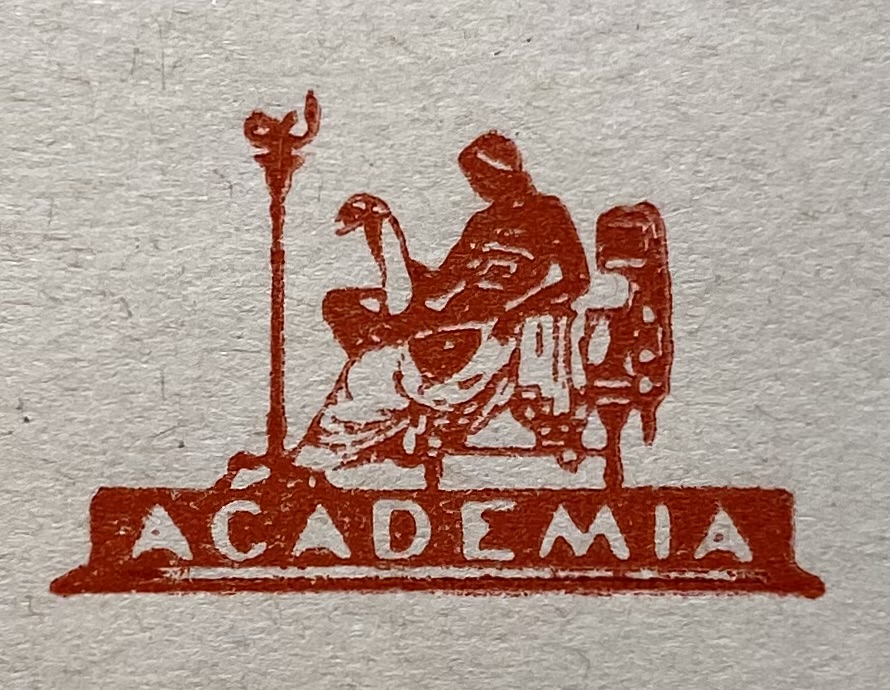
-
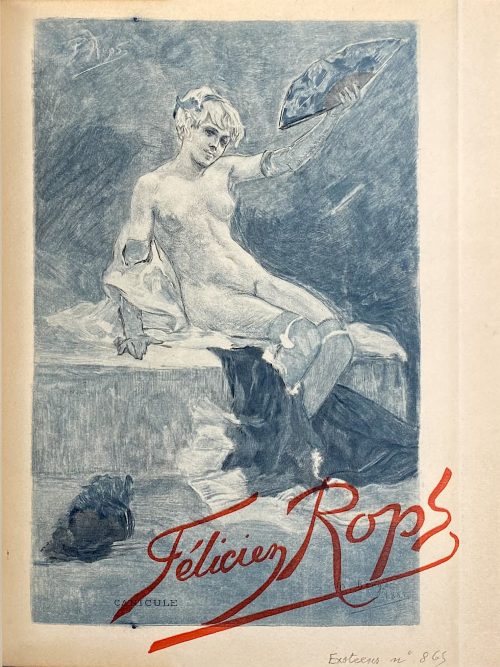 One volume in-4o, 26.5 x 21 x 4 cm, bound by Durvand (signed) in tan quarter morocco over marbled boards, spine with raised bands and gilt lettering, top margin gilt, marbled endpapers, publisher’s wrappers preserved; enriched with 39 original prints after Félicien Rops. Collation: 2 blanks, π5 (original front wrapper ‘Canicule’/blank, 2 blanks, h.t./justification, t.p/blank), 1-294 301 (paginated 1-233 [234]) χ1 (advert.) plus frontispiece (photographic seated portrait of Félicien Rops, collotype, artist unknown) and 39 leaves of bound-in original prints by various printers on different papers, with tissue guards; back wrapper and original spine, 2 blanks; loosely inset a marriage invitation for Dr Robert Fasquelle and Mlle Suzanne Luneau with a partial list of prints, incl. page numbers. Title-page (red and black): Études sur quelques Artistes originaux | — | FÉLICIEN ROPS | par | CAMILLE LEMONNIER | {fleuron} | PARIS | H. FLOURY, ÉDITEUR | 1, Boulevard des Capucines, 1 | – | 1908 || Limitation: 125 copies with two original plates «Canicule» and «Seule» numbered 1-125, of which 100 copies on Japon à la forme, 25 copies on papier de Chine; plus 50 copies on papier vélin with one coloured plate «Canicule», numbered 126-175, printed by Edmond Deman in Brussels. Our copy is on dense wove paper (vélin), without a number. Photographs here represent the original prints only. Camille Lemonnier (Belgian, 1844 – 1913) – author. Félicien Rops (Belgian, 1833 – 1898) – artist. Henri Floury (French, 1862 –1961) – publisher. Edmond Deman (Belgian, 1857–1918) – printer. Lucien Durvand (French, 1852 – 1924) – bookbinder.
One volume in-4o, 26.5 x 21 x 4 cm, bound by Durvand (signed) in tan quarter morocco over marbled boards, spine with raised bands and gilt lettering, top margin gilt, marbled endpapers, publisher’s wrappers preserved; enriched with 39 original prints after Félicien Rops. Collation: 2 blanks, π5 (original front wrapper ‘Canicule’/blank, 2 blanks, h.t./justification, t.p/blank), 1-294 301 (paginated 1-233 [234]) χ1 (advert.) plus frontispiece (photographic seated portrait of Félicien Rops, collotype, artist unknown) and 39 leaves of bound-in original prints by various printers on different papers, with tissue guards; back wrapper and original spine, 2 blanks; loosely inset a marriage invitation for Dr Robert Fasquelle and Mlle Suzanne Luneau with a partial list of prints, incl. page numbers. Title-page (red and black): Études sur quelques Artistes originaux | — | FÉLICIEN ROPS | par | CAMILLE LEMONNIER | {fleuron} | PARIS | H. FLOURY, ÉDITEUR | 1, Boulevard des Capucines, 1 | – | 1908 || Limitation: 125 copies with two original plates «Canicule» and «Seule» numbered 1-125, of which 100 copies on Japon à la forme, 25 copies on papier de Chine; plus 50 copies on papier vélin with one coloured plate «Canicule», numbered 126-175, printed by Edmond Deman in Brussels. Our copy is on dense wove paper (vélin), without a number. Photographs here represent the original prints only. Camille Lemonnier (Belgian, 1844 – 1913) – author. Félicien Rops (Belgian, 1833 – 1898) – artist. Henri Floury (French, 1862 –1961) – publisher. Edmond Deman (Belgian, 1857–1918) – printer. Lucien Durvand (French, 1852 – 1924) – bookbinder. -
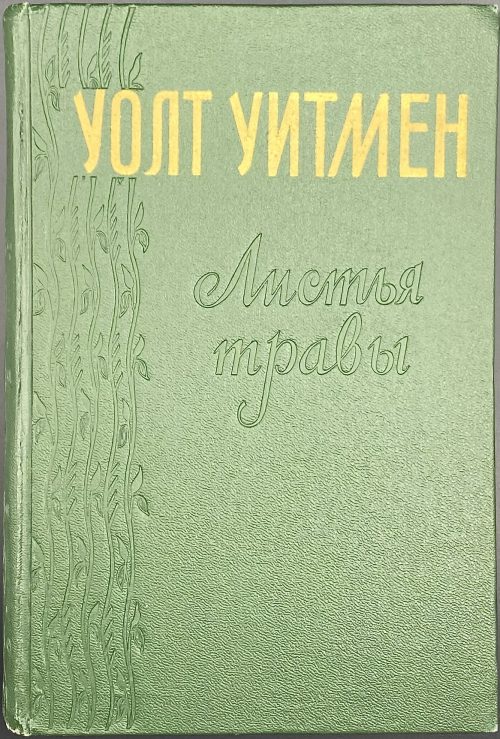 Hardcover volume, 22.8 x 15.5 cm, bound in green buckram with blind stamped designs and gilt lettering to front cover and spine, blind lettering to back, pp.: [2] 3-354 [2], photo portrait frontispiece; collated in 8vo: 1-218 2210, 178 leaves (356 pp.) Title-page (green and black): УОЛТ УИТМЕН | ЛИСТЬЯ ТРАВЫ | {vignette} | ГОСУДАРСТВЕННОЕ ИЗДАТЕЛЬСТВО | ХУДОЖЕСТВЕННОЙ ЛИТЕРАТУРЫ | МОСКВА 1955 || Original: Walt Whitman. Leaves of Grass see LIB-3111.2022. Contributors: Walter [Walt] Whitman (American, 1819 – 1892) – author/poetry. Korney Chukovsky [Корней Иванович Чуковский, Николай Корнейчуков] (Russian, 1882 – 1969) – translator, author/foreword. Морис Осипович Мендельсон (Jewish-Russian, 1904 – 1982) – author/foreword. Translators: Николай Васильевич Банников (Russian, 1918 – 1996) Михаил Александрович Зенкевич (Russian, 1886 – 1973) Иван Александрович Кашкин (Russian, 1899 – 1963) Анатолий Васильевич Старостин (Russian, 1919 – 1980) Дмитрий Александрович Горбов (Russian, 1894 – 1967) Мария Фёдоровна Лорие (Russian, 1904 – 1992) Вильгельм Вениаминович Левик (Jewish-Russian, 1906 – 1982)
Hardcover volume, 22.8 x 15.5 cm, bound in green buckram with blind stamped designs and gilt lettering to front cover and spine, blind lettering to back, pp.: [2] 3-354 [2], photo portrait frontispiece; collated in 8vo: 1-218 2210, 178 leaves (356 pp.) Title-page (green and black): УОЛТ УИТМЕН | ЛИСТЬЯ ТРАВЫ | {vignette} | ГОСУДАРСТВЕННОЕ ИЗДАТЕЛЬСТВО | ХУДОЖЕСТВЕННОЙ ЛИТЕРАТУРЫ | МОСКВА 1955 || Original: Walt Whitman. Leaves of Grass see LIB-3111.2022. Contributors: Walter [Walt] Whitman (American, 1819 – 1892) – author/poetry. Korney Chukovsky [Корней Иванович Чуковский, Николай Корнейчуков] (Russian, 1882 – 1969) – translator, author/foreword. Морис Осипович Мендельсон (Jewish-Russian, 1904 – 1982) – author/foreword. Translators: Николай Васильевич Банников (Russian, 1918 – 1996) Михаил Александрович Зенкевич (Russian, 1886 – 1973) Иван Александрович Кашкин (Russian, 1899 – 1963) Анатолий Васильевич Старостин (Russian, 1919 – 1980) Дмитрий Александрович Горбов (Russian, 1894 – 1967) Мария Фёдоровна Лорие (Russian, 1904 – 1992) Вильгельм Вениаминович Левик (Jewish-Russian, 1906 – 1982) -
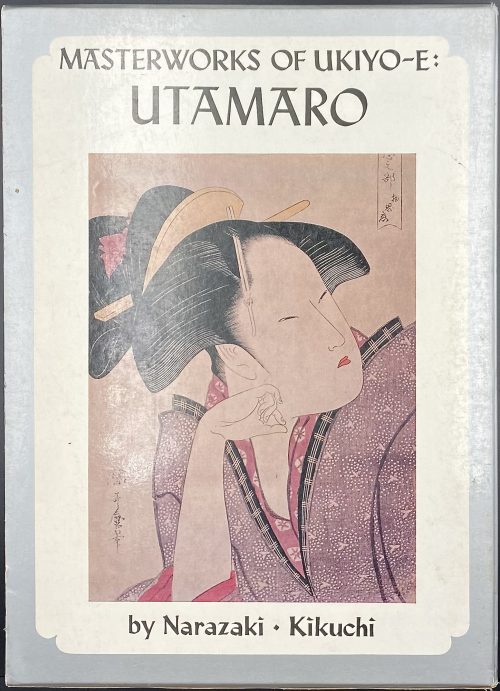 Hardcover volume from the series Masterworks of ukiyo-e, 26.5 x 19 cm, bound in unprimed canvas, red ms characters on black strip to front, red and black lettering to spine, tan embossed endpapers, in a pictorial slipcase with series design (black lettering on silver spine); pp: [1-6]: h.t./frontis. (colour plate pasted in), t.p./imprint, contents/acknowledgements), 7-31 text, [32] blank, 33-96 (76 plates w/captions). Title-page (in frame): MASTERWORKS OF UKIYO-E | UTAMARO | by Muneshige Narazaki and Sadao Kikuchi | Translated by John Bester | {publisher’s device} | KODANSHA INTERNATIONAL LTD. | Tokyo, Japan & Palo-Alto, Calif., U.S.A | {vertical, between rules 歌麿} || Series: Masterworks of ukiyo-e, № 4. Contributors: Muneshige Narazaki [楢崎 宗重] (Japanese, 1904 – 2001) – author. Sadao Kikuchi [菊地 貞雄] (Japanese, 1924 – 2017) – author. John Bester (British, 1927 – 2010) – translator. Kitagawa Utamaro [喜多川 歌麿] (Japanese, c. 1753 – 1806) – artist.
Hardcover volume from the series Masterworks of ukiyo-e, 26.5 x 19 cm, bound in unprimed canvas, red ms characters on black strip to front, red and black lettering to spine, tan embossed endpapers, in a pictorial slipcase with series design (black lettering on silver spine); pp: [1-6]: h.t./frontis. (colour plate pasted in), t.p./imprint, contents/acknowledgements), 7-31 text, [32] blank, 33-96 (76 plates w/captions). Title-page (in frame): MASTERWORKS OF UKIYO-E | UTAMARO | by Muneshige Narazaki and Sadao Kikuchi | Translated by John Bester | {publisher’s device} | KODANSHA INTERNATIONAL LTD. | Tokyo, Japan & Palo-Alto, Calif., U.S.A | {vertical, between rules 歌麿} || Series: Masterworks of ukiyo-e, № 4. Contributors: Muneshige Narazaki [楢崎 宗重] (Japanese, 1904 – 2001) – author. Sadao Kikuchi [菊地 貞雄] (Japanese, 1924 – 2017) – author. John Bester (British, 1927 – 2010) – translator. Kitagawa Utamaro [喜多川 歌麿] (Japanese, c. 1753 – 1806) – artist. -
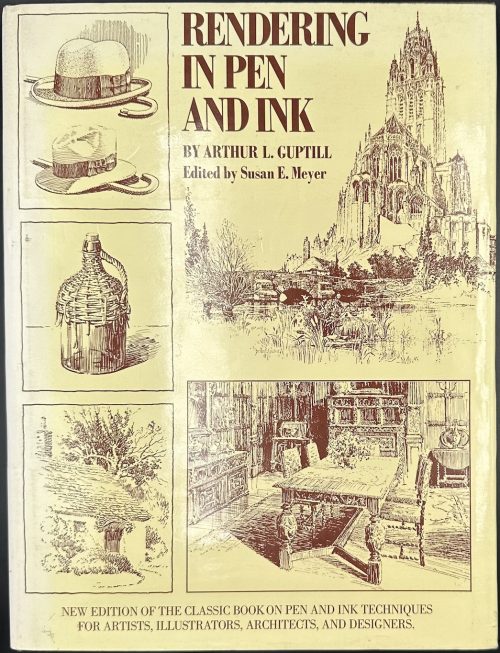 Hardcover volume, 31 x 23.8 cm, bound in brown cloth with gilt lettering to front board and spine, in pictorial dust jacket, pp.: [1-9] 10-255 [256], ils. 1st edition. Title-page: RENDERING | IN PEN | AND INK | BY ARTHUR L. GUPTILL | EDITED BY SUSAN E. MEYER | WATSON- GUPTILL PUBLICATIONS, NEW YORK || Contributors: Arthur L. Guptill (American, 1891 – 1956) – author. Susan E. Meyer (American, b. 1940) – editor. Printed by Halliday Lithograph Corp. – printer.
Hardcover volume, 31 x 23.8 cm, bound in brown cloth with gilt lettering to front board and spine, in pictorial dust jacket, pp.: [1-9] 10-255 [256], ils. 1st edition. Title-page: RENDERING | IN PEN | AND INK | BY ARTHUR L. GUPTILL | EDITED BY SUSAN E. MEYER | WATSON- GUPTILL PUBLICATIONS, NEW YORK || Contributors: Arthur L. Guptill (American, 1891 – 1956) – author. Susan E. Meyer (American, b. 1940) – editor. Printed by Halliday Lithograph Corp. – printer. -
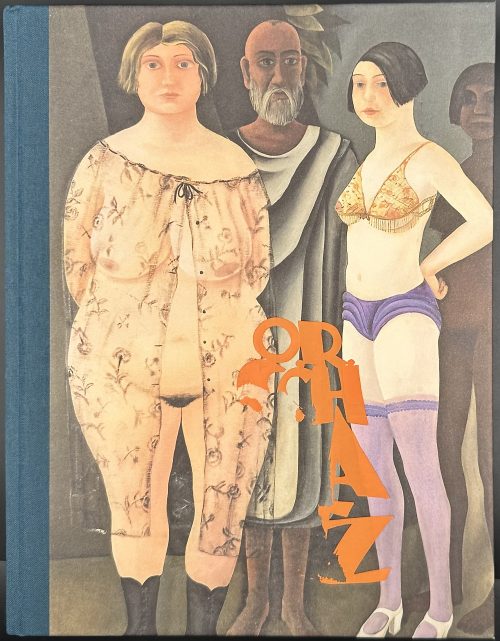 Hardcover, 31 x 24 cm, blue cloth over cardboard, orange lettering to spine, pictorial front cover, embossed back cover, pp.: [1-6] 7-271 [1], approx. 700 colour illustrations. Monograph and catalogue raisonné. ISBN: 978-3-85415-570-6. Title-page (orange): CORNELIA CABUK | {O. R. Schatz as vignette} | MONOGRAFIE | und | WERK= | VERZEICHNIS | mit Textbeiträgen von | STELLA ROLLIG | DIETER KRAFT | CORNELIA CABUK | Belvedere Werkverzeichnisse, Band 7 | Stella Rollig, Christian Huemer (Hg.) || Contributors: Otto Rudolf Schatz (Austrian, 1900 – 1961) Österreichische Galerie Belvedere Cornelia Cabuk Dieter Kraft Stella Rollig Ritter Verlag (Vienna)
Hardcover, 31 x 24 cm, blue cloth over cardboard, orange lettering to spine, pictorial front cover, embossed back cover, pp.: [1-6] 7-271 [1], approx. 700 colour illustrations. Monograph and catalogue raisonné. ISBN: 978-3-85415-570-6. Title-page (orange): CORNELIA CABUK | {O. R. Schatz as vignette} | MONOGRAFIE | und | WERK= | VERZEICHNIS | mit Textbeiträgen von | STELLA ROLLIG | DIETER KRAFT | CORNELIA CABUK | Belvedere Werkverzeichnisse, Band 7 | Stella Rollig, Christian Huemer (Hg.) || Contributors: Otto Rudolf Schatz (Austrian, 1900 – 1961) Österreichische Galerie Belvedere Cornelia Cabuk Dieter Kraft Stella Rollig Ritter Verlag (Vienna) -
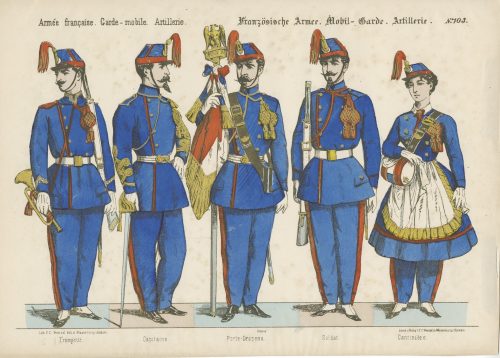 Hand-coloured woodcut on wove paper, 282 x 392 mm; black ink stamp “5051 2” to reverse. Top: "Armée française. Garde–mobile. Artillerie." — (gothic font) "Französische Armee. Mobil–Garde. Artillerie." — "№103". Below left: "Lith F. C. Wentzel édit. à Wissembourg. (Alsacé); center: Déposé; right: Druck u. Verlag v. F. C. Wentzel in Weissemburg. (Elsass)."; Bottom: "Trompette" — "Capitaine" — "Porte-Drapeau". — "Soldat" — "Cantinière." Jean Frédéric Wentzel (French, 1807 – 1869) – publisher/printer.
Hand-coloured woodcut on wove paper, 282 x 392 mm; black ink stamp “5051 2” to reverse. Top: "Armée française. Garde–mobile. Artillerie." — (gothic font) "Französische Armee. Mobil–Garde. Artillerie." — "№103". Below left: "Lith F. C. Wentzel édit. à Wissembourg. (Alsacé); center: Déposé; right: Druck u. Verlag v. F. C. Wentzel in Weissemburg. (Elsass)."; Bottom: "Trompette" — "Capitaine" — "Porte-Drapeau". — "Soldat" — "Cantinière." Jean Frédéric Wentzel (French, 1807 – 1869) – publisher/printer. -
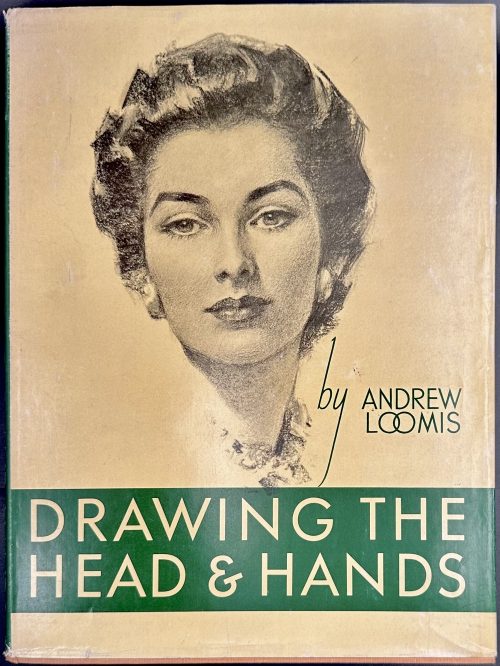 Hardcover volume, 31 x 23.5 cm, peach cloth, with peach lettering to the green label on front board, green lettering to spine, pictorial dust jacket, price unclipped ($4.95); text to flaps; pp.: [1-6] 7-154 [155 plate] [5 blanks], ils. (photomechanical reproductions); magazine clipping laid in. Title-page: Drawing | THE HEAD AND HANDS | BY | ANDREW LOOMIS | {vignette} | NEW YORK • THE VIKING PRESS || Imprint: COPYRIGHT © 1956 BY ANDREW LOOMIS | FIRST PUBLISHED BY THE VIKING PRESS IN JANUARY 1956 | PUBLISHED ON THE SAME DAY IN THE DOMINION OF CANADA | BY THE MACMILLAN COMPANY OF CANADA LIMITED | SECOND PRINTING 1958 | {two paragraphs of copyright statement} | LITHOGRAPHED IN U.S.A, BY W. S. KONECKY ASSOCIATES || Edition: 1st edition, 2nd printing. Andrew Loomis (American, 1892 – 1959)
Hardcover volume, 31 x 23.5 cm, peach cloth, with peach lettering to the green label on front board, green lettering to spine, pictorial dust jacket, price unclipped ($4.95); text to flaps; pp.: [1-6] 7-154 [155 plate] [5 blanks], ils. (photomechanical reproductions); magazine clipping laid in. Title-page: Drawing | THE HEAD AND HANDS | BY | ANDREW LOOMIS | {vignette} | NEW YORK • THE VIKING PRESS || Imprint: COPYRIGHT © 1956 BY ANDREW LOOMIS | FIRST PUBLISHED BY THE VIKING PRESS IN JANUARY 1956 | PUBLISHED ON THE SAME DAY IN THE DOMINION OF CANADA | BY THE MACMILLAN COMPANY OF CANADA LIMITED | SECOND PRINTING 1958 | {two paragraphs of copyright statement} | LITHOGRAPHED IN U.S.A, BY W. S. KONECKY ASSOCIATES || Edition: 1st edition, 2nd printing. Andrew Loomis (American, 1892 – 1959) -
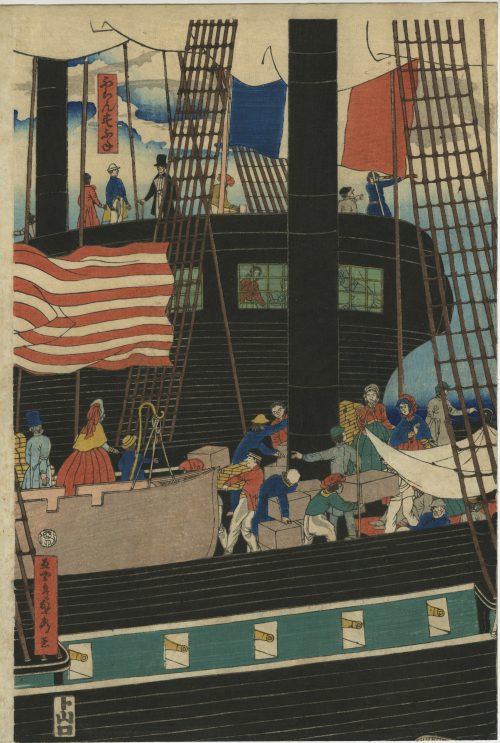 Utagawa Sadahide, a.k.a. Gountei Sadahide (Japanese, 1807 – c. 1878–1879), 五雲亭 貞秀, 歌川 貞秀, Yamaguchiya Tōbei, Yokohama kōeki seiyōjin nimotsu unsō no zu - Western traders loading cargo in Yokohama - 横浜交易西洋人荷物運送之圖, 1861, Woodblock print (nishiki-e); ink and color on paper, Horizontal Ōban Pentaptych: 5 x (37 x 25.5 cm), Alternative title: Picture of Western Traders at Yokohama Transporting Merchandise (Cat. Reisonée: Yokohama ukiyo-e, Yurindo, 1979: №50). Japanese pentaptych print shows an American ship in the harbor at Yokohama, Japan; small boats ferry cargo which is being carried up a gangplank contributing to the bustle of activity on the main deck. April, 1861. SOLD
Utagawa Sadahide, a.k.a. Gountei Sadahide (Japanese, 1807 – c. 1878–1879), 五雲亭 貞秀, 歌川 貞秀, Yamaguchiya Tōbei, Yokohama kōeki seiyōjin nimotsu unsō no zu - Western traders loading cargo in Yokohama - 横浜交易西洋人荷物運送之圖, 1861, Woodblock print (nishiki-e); ink and color on paper, Horizontal Ōban Pentaptych: 5 x (37 x 25.5 cm), Alternative title: Picture of Western Traders at Yokohama Transporting Merchandise (Cat. Reisonée: Yokohama ukiyo-e, Yurindo, 1979: №50). Japanese pentaptych print shows an American ship in the harbor at Yokohama, Japan; small boats ferry cargo which is being carried up a gangplank contributing to the bustle of activity on the main deck. April, 1861. SOLD -
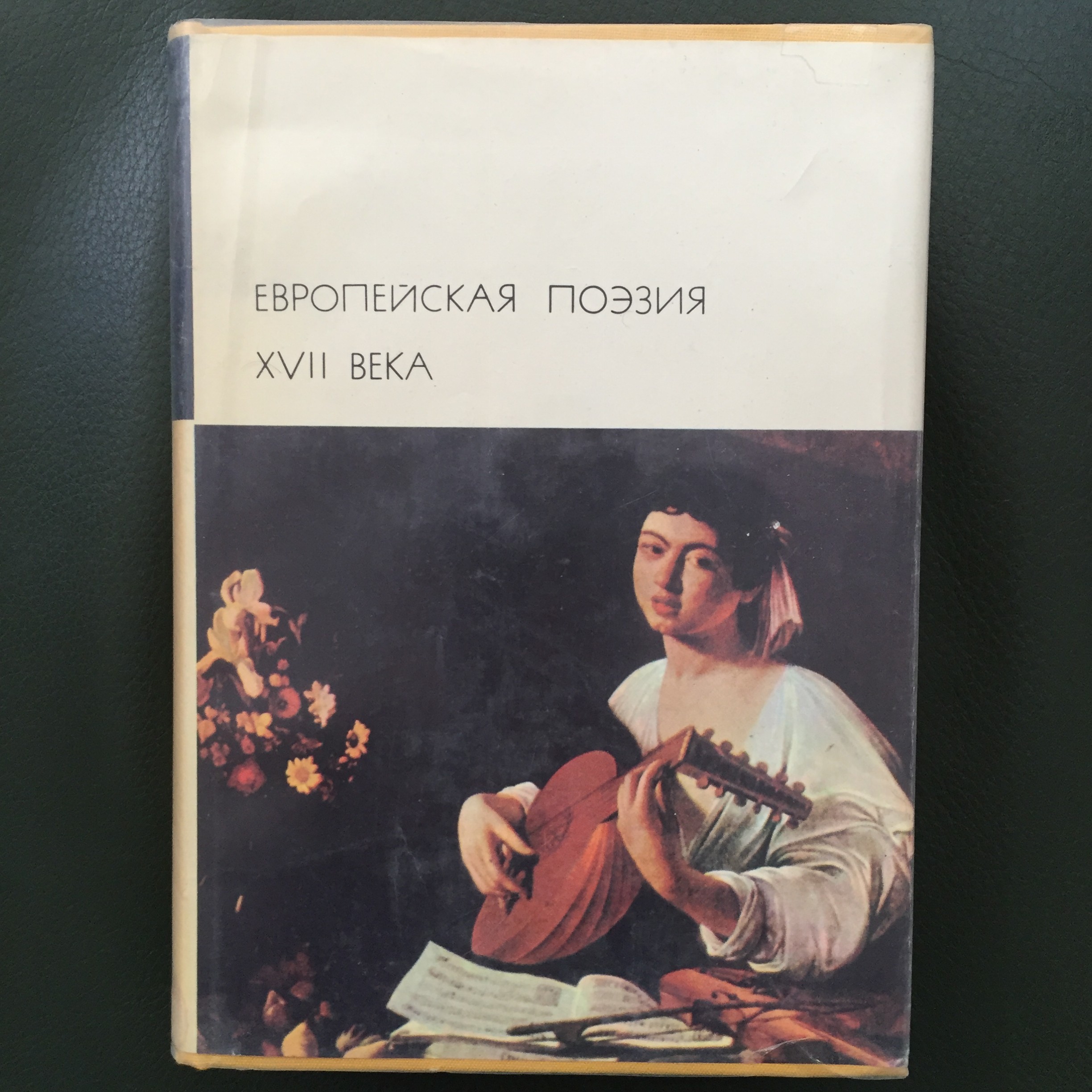
Европейская поэзия XVII века. Библиотека всемирной литературы. Серия первая. М.: Художественная литература, 1977. 928 с. Вступительная статья Ю. Виппера. Тир. 303 000.
-
 Seiro ehon nenju gyoji 青楼絵本年中行事 (A Picture Book of Annual Events in Yoshiwara). Block cut by: Fuji Kazumune (藤一宗). Printed by: Jakushodo Toemon (霍松堂藤右衛門). Written by: Jippensha Ikku (十返舎一九) (text, kyoka 4 & 12). Published by: Kazusaya Chusuke (上総屋忠助). Print artist: Kitagawa Utamaro (喜多川歌麿). Written by: Sandara Boshi (三陀羅法師) (kyoka 1). Workshop of: Yashiki no Katamaru (屋職堅丸). 1804 (spring); Edo. Reference: British Museum; Fine Arts Museums of San Francisco.
Seiro ehon nenju gyoji 青楼絵本年中行事 (A Picture Book of Annual Events in Yoshiwara). Block cut by: Fuji Kazumune (藤一宗). Printed by: Jakushodo Toemon (霍松堂藤右衛門). Written by: Jippensha Ikku (十返舎一九) (text, kyoka 4 & 12). Published by: Kazusaya Chusuke (上総屋忠助). Print artist: Kitagawa Utamaro (喜多川歌麿). Written by: Sandara Boshi (三陀羅法師) (kyoka 1). Workshop of: Yashiki no Katamaru (屋職堅丸). 1804 (spring); Edo. Reference: British Museum; Fine Arts Museums of San Francisco. -
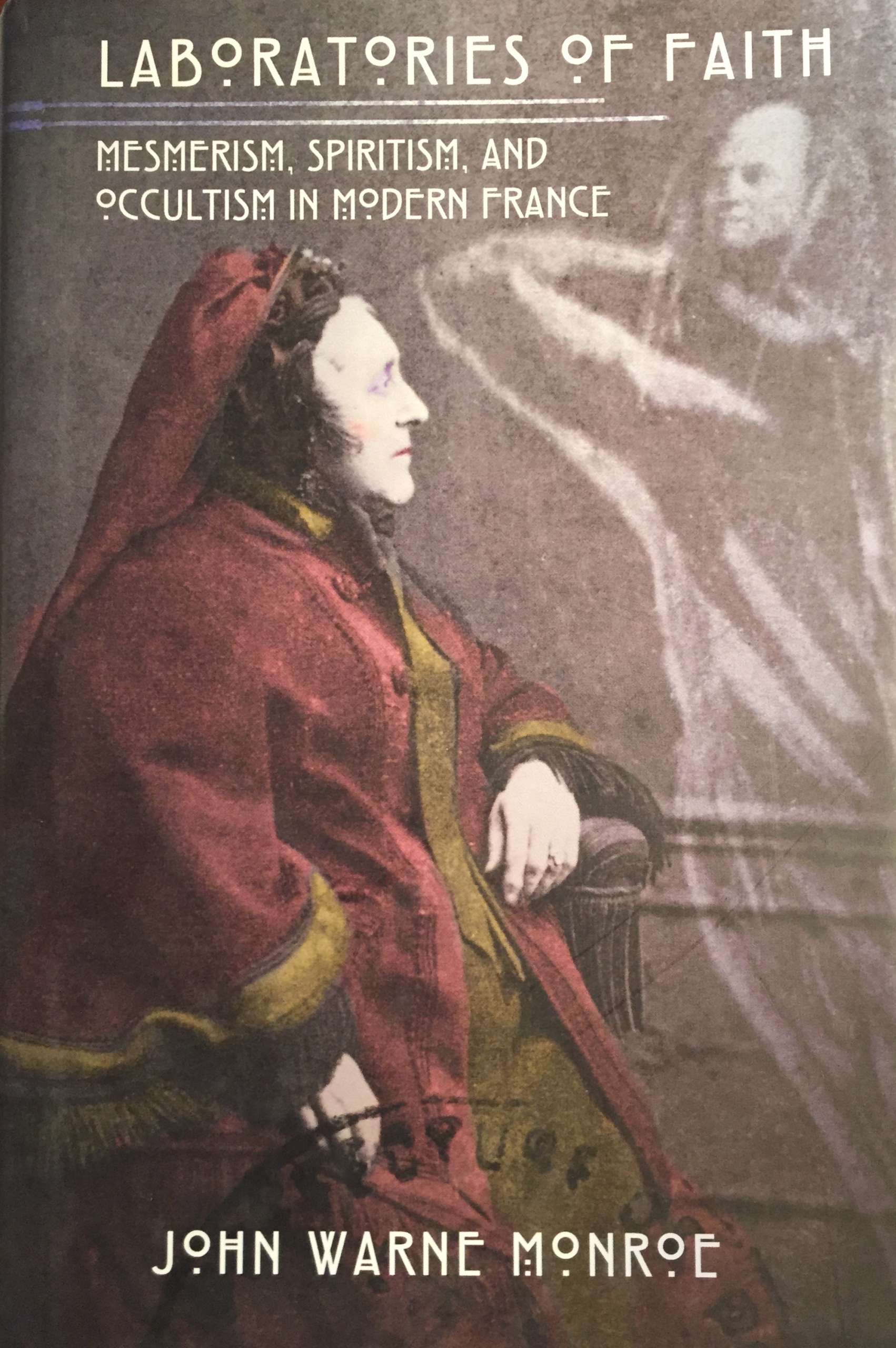
John Warne Monroe. Laboratories of Faith: Mesmerism, Spiritism, and Occultism in Modern France.
Cornel University Press, 2008.
ISBN: 9780801445620; Hardcover.
-
 Iron tsuba of round form with design of slanting rays of light (shakoh) or clock gear (tokei) in openwork (sukashi). Commonly considered a Christian / Jesuit motif. Round-cornered rim. Copper sekigane. Momoyama period: Late 16th century (Tensho/Keicho era). Height: 72.5 mm, Width: 72.2 mm, Rim thickness: 5.5 mm, Center thickness: 5.3 mm. Round-cornered rim. Provenance: Sasano collection. Sasano Masayuki, Japanese Sword Guards Masterpieces from The Sasano Collection, Part I, № 136: "The general belief that this design represents the gear of a clock is erroneous, rather it shows the slanting rays of light from a cross, with the small diamond shapes representing the upright and transverse bars. The Christian influence is obvious..."
Iron tsuba of round form with design of slanting rays of light (shakoh) or clock gear (tokei) in openwork (sukashi). Commonly considered a Christian / Jesuit motif. Round-cornered rim. Copper sekigane. Momoyama period: Late 16th century (Tensho/Keicho era). Height: 72.5 mm, Width: 72.2 mm, Rim thickness: 5.5 mm, Center thickness: 5.3 mm. Round-cornered rim. Provenance: Sasano collection. Sasano Masayuki, Japanese Sword Guards Masterpieces from The Sasano Collection, Part I, № 136: "The general belief that this design represents the gear of a clock is erroneous, rather it shows the slanting rays of light from a cross, with the small diamond shapes representing the upright and transverse bars. The Christian influence is obvious..." -
 Iron tsuba of round form decorated with eight roundels - circular emblems of flowers and/or family crests (mon) made of cast brass, pierced and chiseled in kebori, and with flat brass inlay (hira-zōgan) of vines or seaweed all over the plate. Hitsu-ana outlined in brass. Four positive silhouette roundels are 3-, 4-, 5-, and 6- pointing crests/flowers; four negative silhouette roundels are bellflower, cherry blossom, and suhama. Yoshirō school (Kaga-Yoshirō). The Momoyama or early Edo period, beginning of 17th century. Size: diameter 77 mm, thickness 3,8 mm
Iron tsuba of round form decorated with eight roundels - circular emblems of flowers and/or family crests (mon) made of cast brass, pierced and chiseled in kebori, and with flat brass inlay (hira-zōgan) of vines or seaweed all over the plate. Hitsu-ana outlined in brass. Four positive silhouette roundels are 3-, 4-, 5-, and 6- pointing crests/flowers; four negative silhouette roundels are bellflower, cherry blossom, and suhama. Yoshirō school (Kaga-Yoshirō). The Momoyama or early Edo period, beginning of 17th century. Size: diameter 77 mm, thickness 3,8 mm -
 A very large and very thin iron tsuba of round form decorated with design of formalized butterfly and dragonfly in openwork (sukashi). The characteristics of the plate resemble those of Kamakura period ko-tōshō tsuba. However, the design seems too 'modern' to me, but it's hard to tell; it may be a late Muromachi or Momoyama period work. Tōshō or Ko-Tōshō school (or a Katchushi). Muromachi period. Dimensions: 99.6 x 100.5 x 2.1 mm. This is what Jim Gilbert says about old tsuba:
A very large and very thin iron tsuba of round form decorated with design of formalized butterfly and dragonfly in openwork (sukashi). The characteristics of the plate resemble those of Kamakura period ko-tōshō tsuba. However, the design seems too 'modern' to me, but it's hard to tell; it may be a late Muromachi or Momoyama period work. Tōshō or Ko-Tōshō school (or a Katchushi). Muromachi period. Dimensions: 99.6 x 100.5 x 2.1 mm. This is what Jim Gilbert says about old tsuba:"Traditionally the old iron plate tsuba are classified into Ko Tosho (old sword smith), and Ko Katchushi (old armor maker) styles. It is sometimes difficult to justify attribution of a given tsuba to the Tosho or Katchushi category. Generally guards with raised rims or relatively complex designs tend to be assigned to Katchushi. This is basically a convention we follow out of habit and convenience." [...] "In Token Kai-Shi part six, Articles by Akiyama Kyusaku, Robert Haynes comments: "…from 1300 to 1400 over 150,000 MOUNTED swords were made in Japan for export alone. This means that over four tsuba a day were made for 100 years. This would mean that at least 3000 persons were making nothing but tsuba, let alone all the other fittings needed to complete these swords. With sword smiths, fittings makers and all the other artists need to complete a sword for export, at least 10,000 sword artists were working together, in any one of these hundred years."
Reference to design can be found at "Japanese Swords and Tsuba from the Professor A. Z. Freeman and the Phyllis Sharpe Memorial collections" / Sotheby's, London, Thursday 10 April 1997; p. 18-19, lot № 37: "A Kamakura-bori Tsuba, Momoyama Period. ...pierced with two large formalised butterflies..."Reference to design in this collection: TSU-0319.
A Kamakura-bori tsuba of octagonal form, Momoyama period.

TSU-0319. Ōnin ten-zōgan tsuba, Muromachi period.
-

Iron tsuba of oval form with the design of two immortals (Gama Sennin with the toad upon his head and Tekkai Sennin with his iron crutch) beside a waterfall carved in low relief with a high relief effect (takabori) and with details inlaid in gold. A waterfall carved on the reverse. Nakago-ana is plugged with copper sekigane. Unsigned. Allegedly, Mito School.
Edo period, ca. 1700.
Size: Height: 87.0 mm; Width: 82.8 mm; Thickness: 4.4 mm; Weight: 179 g.
No longer available.


